The small city of Jaisalmer is a desert town on the border between the Indian state of Rajasthan and Pakistan. Its sandcastle like fort seems to come right out of the Thar Desert with a tall, formidable wall. Inside the fort walls, Old Town is still a vibrant part of the larger city.
The 500-year-old fort including wall, palace and homes are all built of yellow sandstone giving the appearance of a sandcastle glowing in the desert. Because of its look, Jaisalmer is nicknamed the ‘Golden City’. The only entry into the fort complex is on a steep, stone path that passes through four large gates. The path has sharp corners that were designed to slow down any surprise invaders. The large fort takes over the entire top of the hill above town.

South East view of Jaisalmer Fort 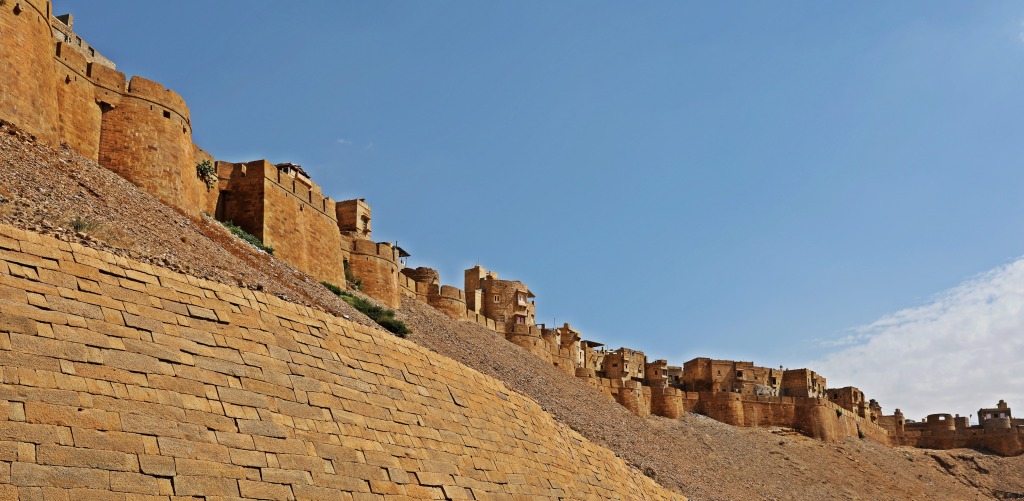
Jaisalmer Fort 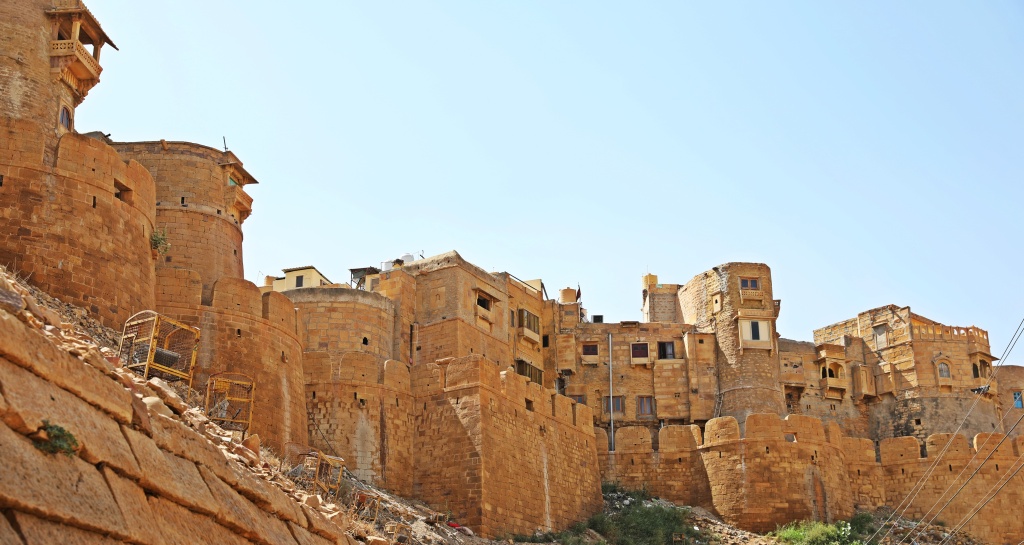
Jaisalmer Fort 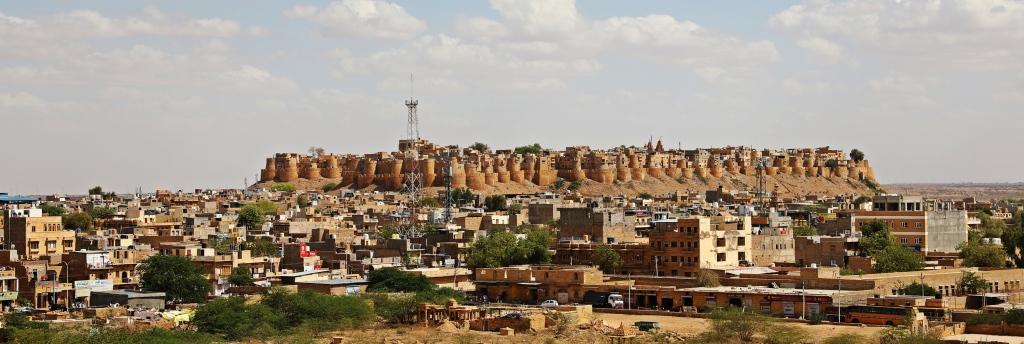
Northwest side of Jaisalmer Fort 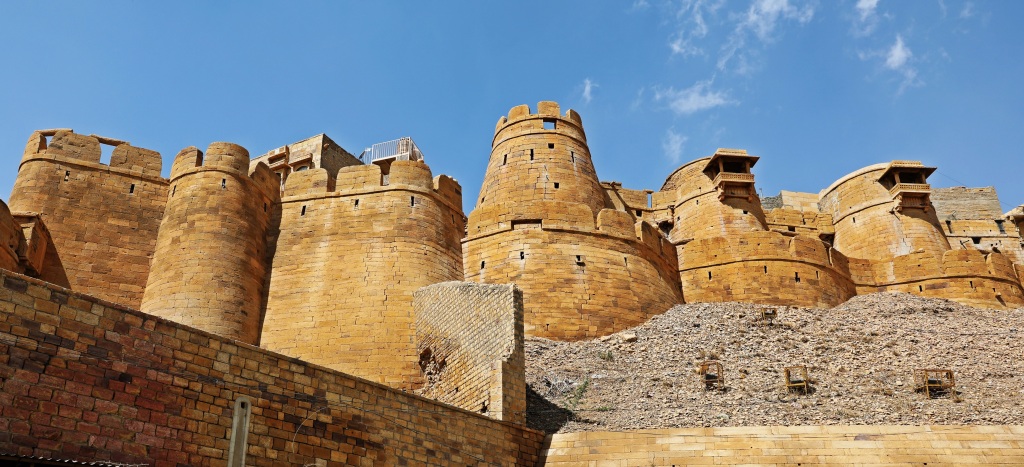
Jaisalmer Fort wall 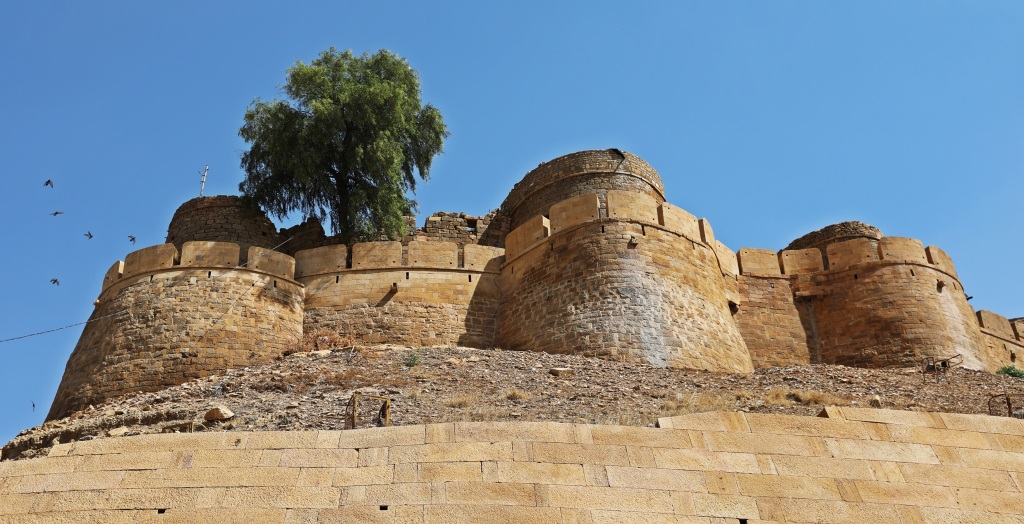
Jaisalmer Fort wall 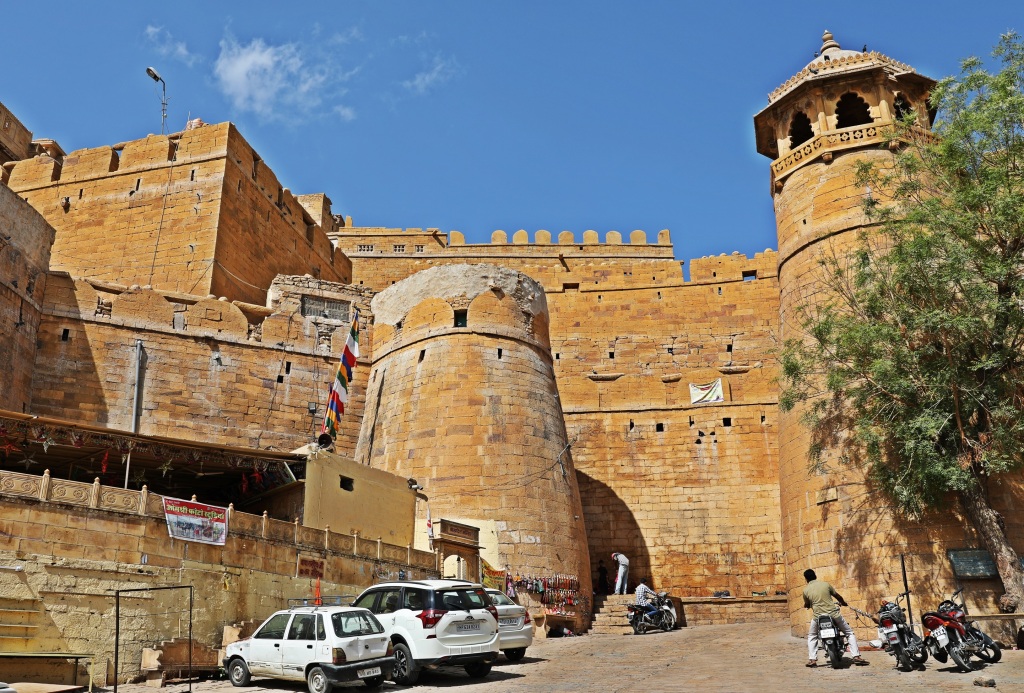
Main Gate, Jaisalmer Fort 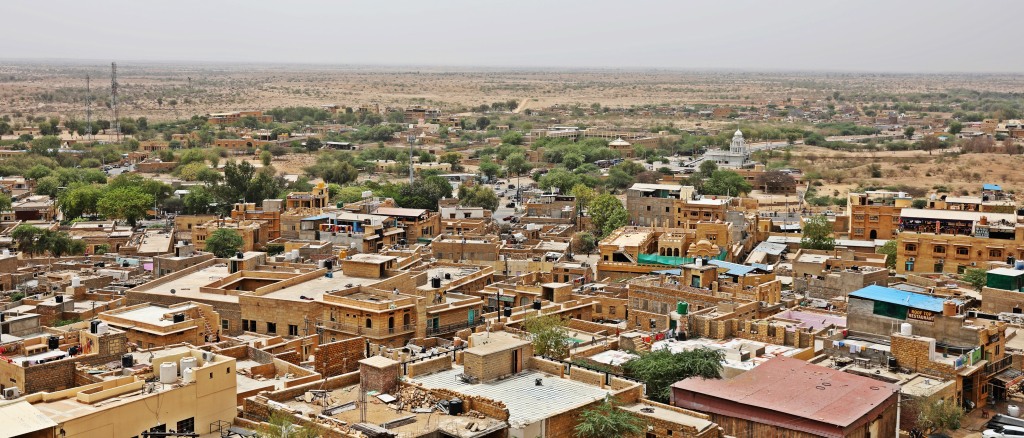
Jaisalmer City with Thar desert in the background 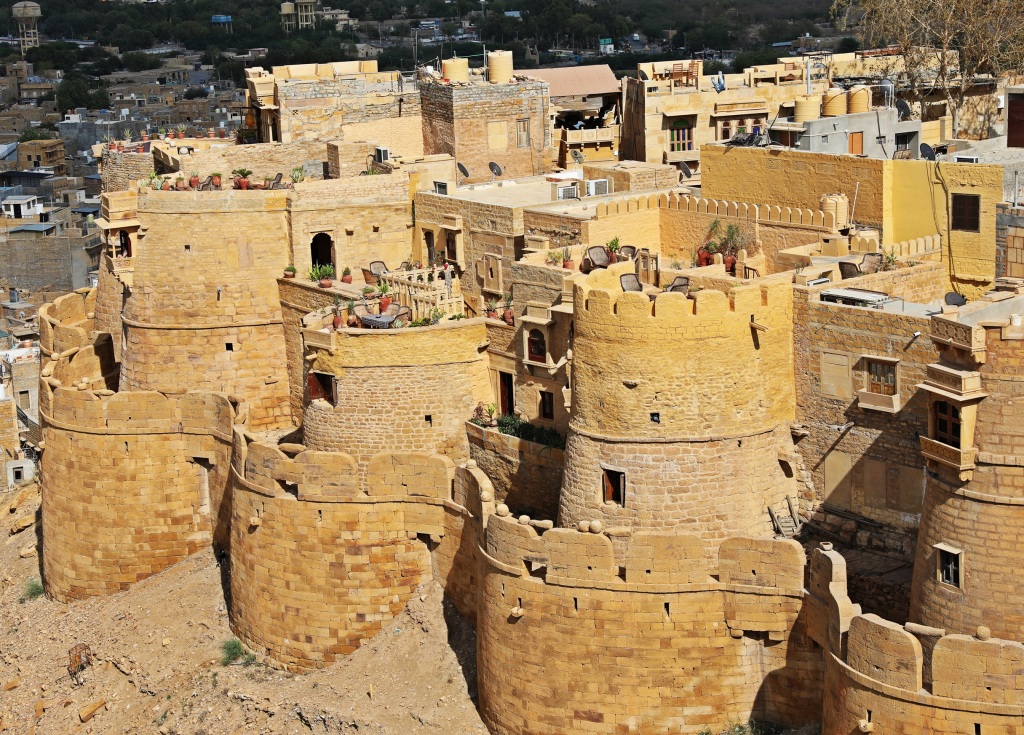
Jaisalmer Fort 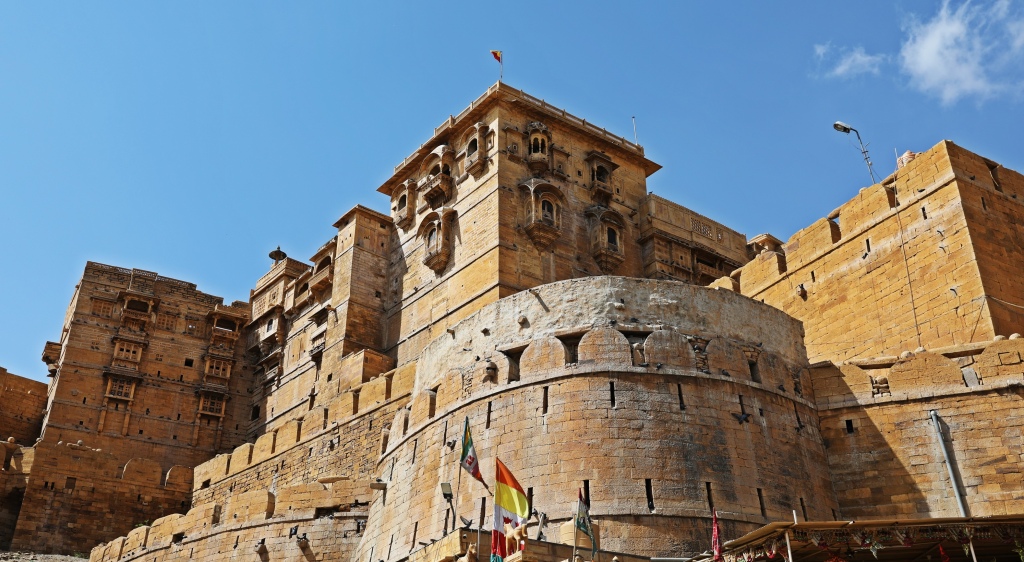
Bastion, Jaisalmer Fort 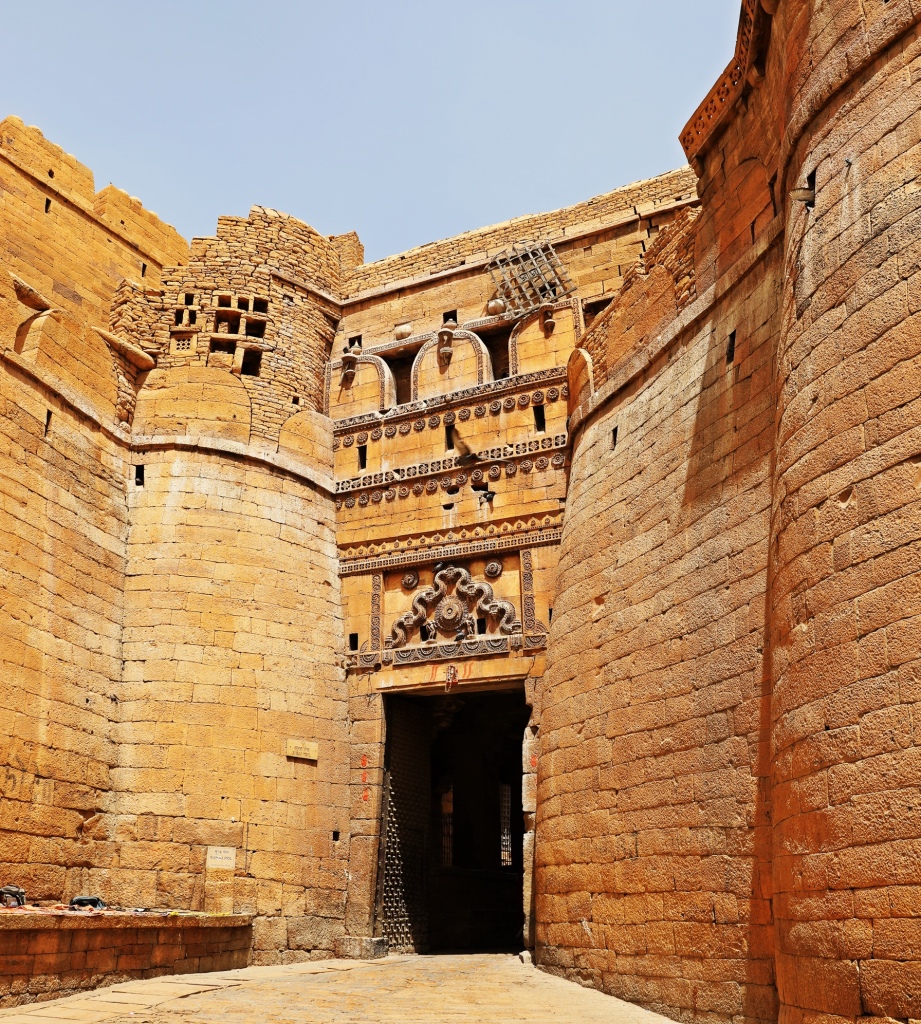
Gate, Jaisalmer Fort 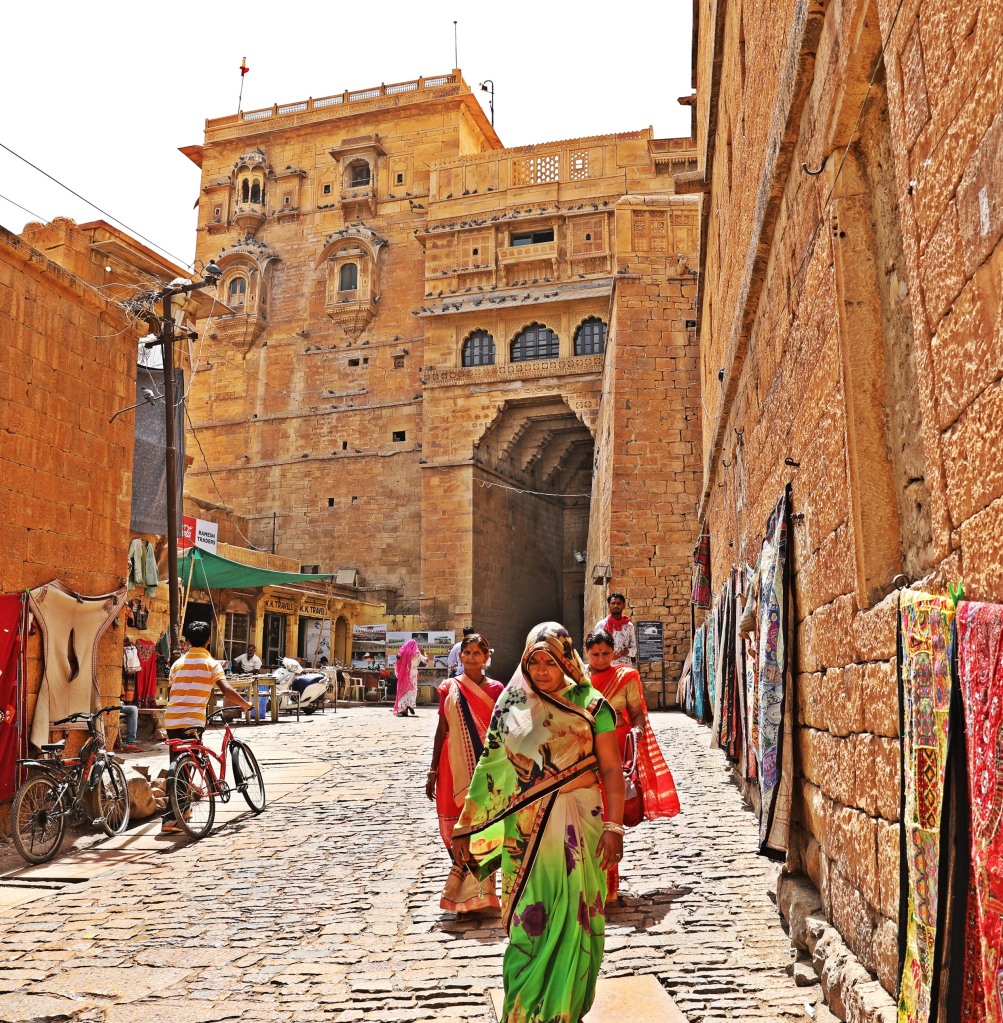
Gate, Jaisalmer Fort 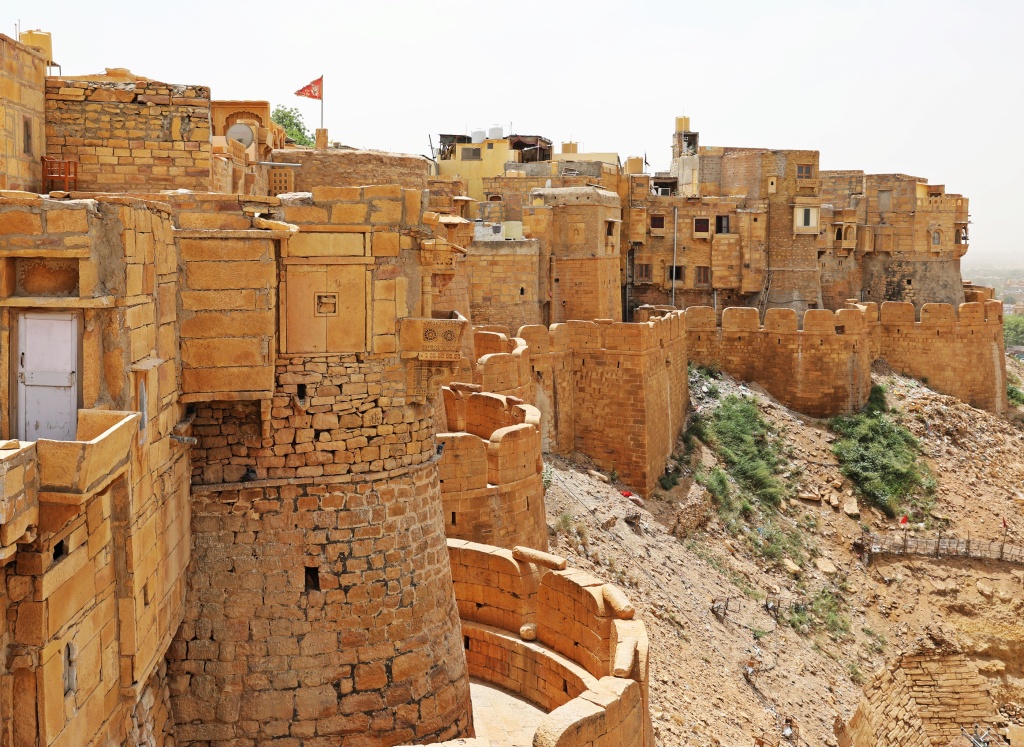
View of Jaisalmer Fort Wall Old Town buildings 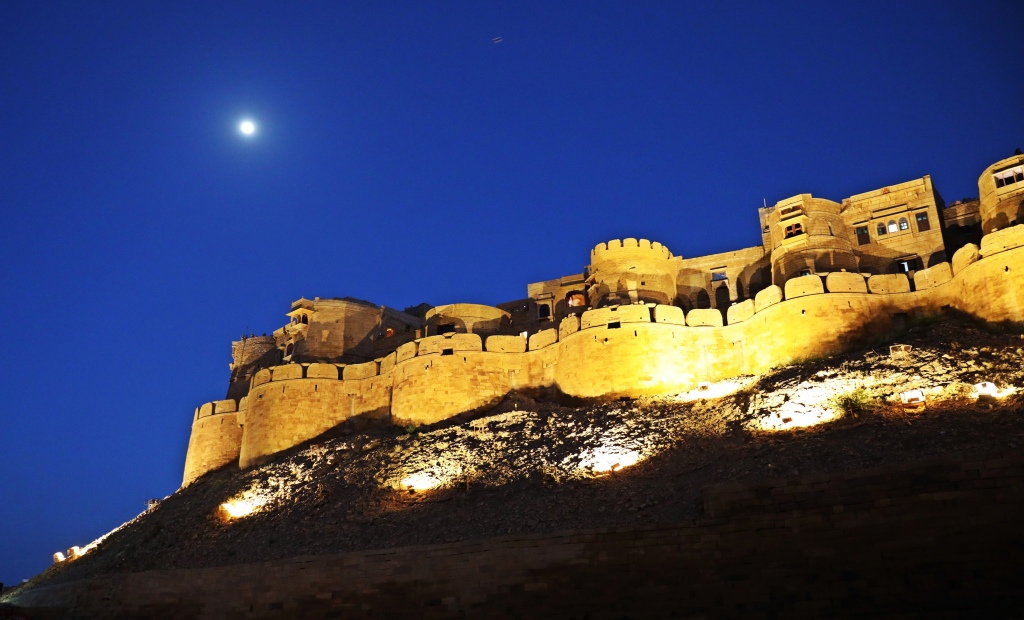
Jaisalmer Fort at night
Inside the fort walls, much of the Old City remains. The maze of narrow lanes in the fort are paved with yellow sandstone and the homes come right up to their edge, making the town beautifully monochromatic. The buildings are decorated with wonderfully detailed designs carved into the screen windows, doors and Juliet balconies. With ¼ of Jaisalmer’s population living within the fort walls, it has a lively atmosphere. There are local markets and homes but also a lot of tourist shops and guest houses. The nice part is that cars cannot navigate the narrow streets and most motorcycles drive slow and don’t usually honk. We were warned that touts in Rajasthan are among the most aggressive in India. Thankfully, we didn’t experience that in Jaisalmer. We found them to be friendly and would easily take ‘no’ for an answer.
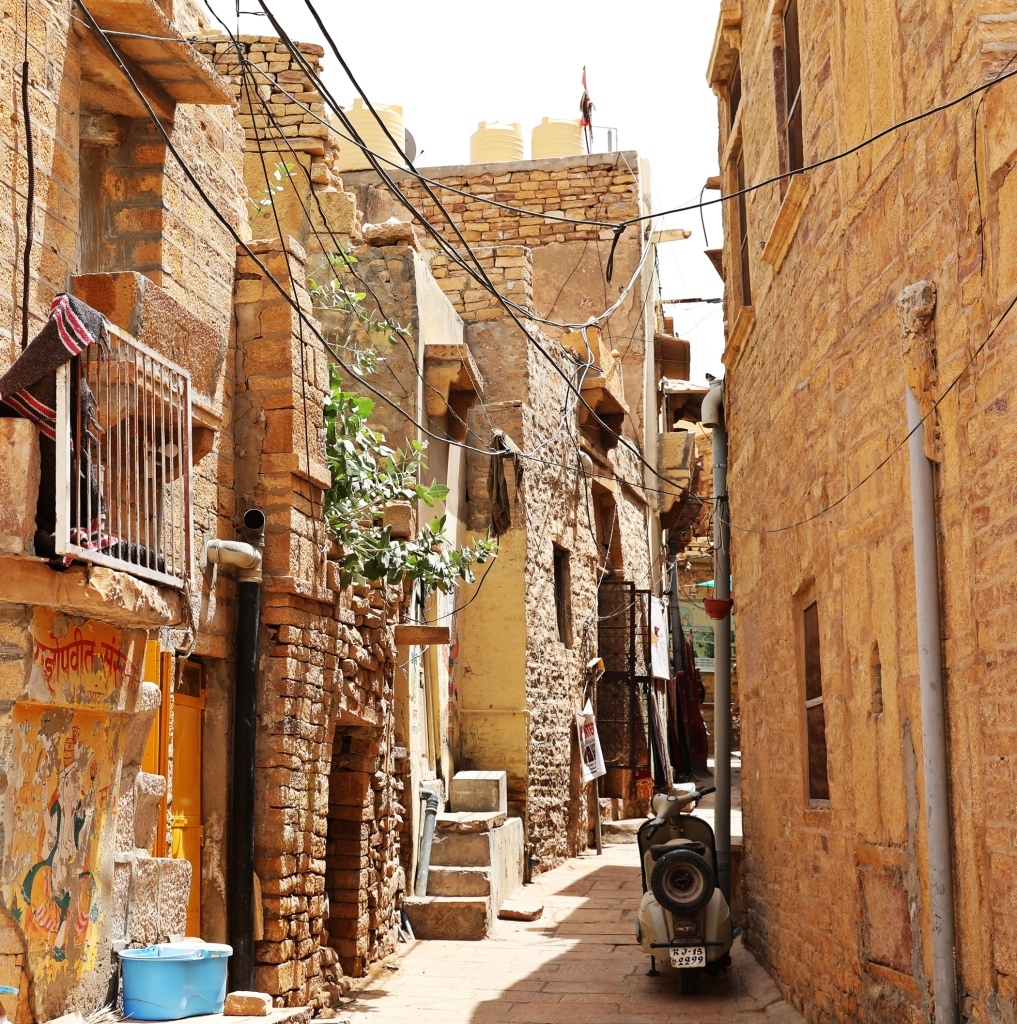
Narrow street in Jaisalmer Fort 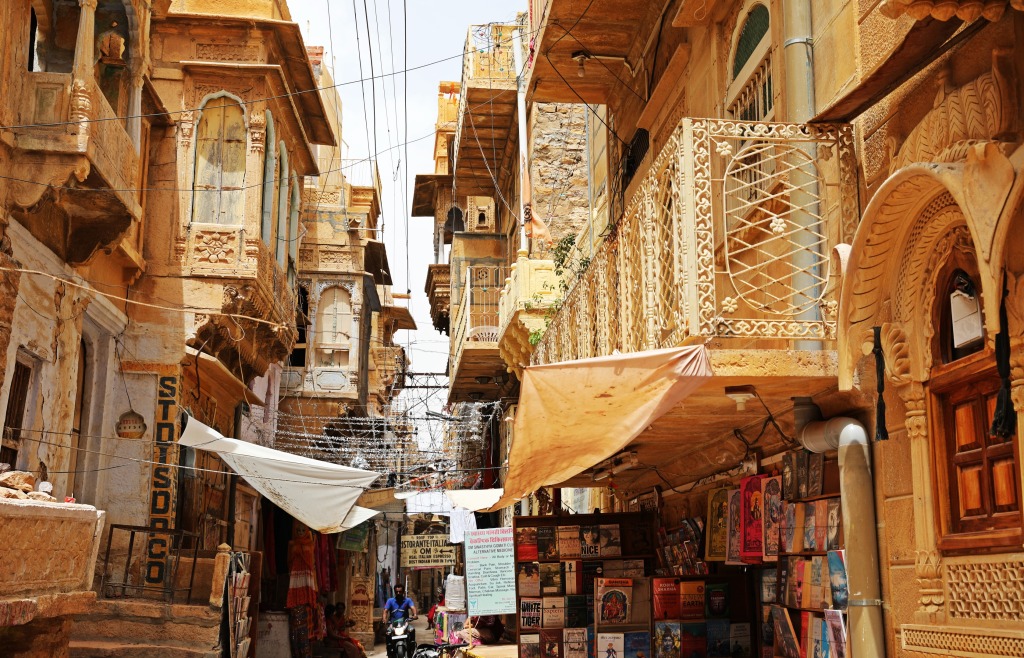
Narrow street, Jaisalmer Fort 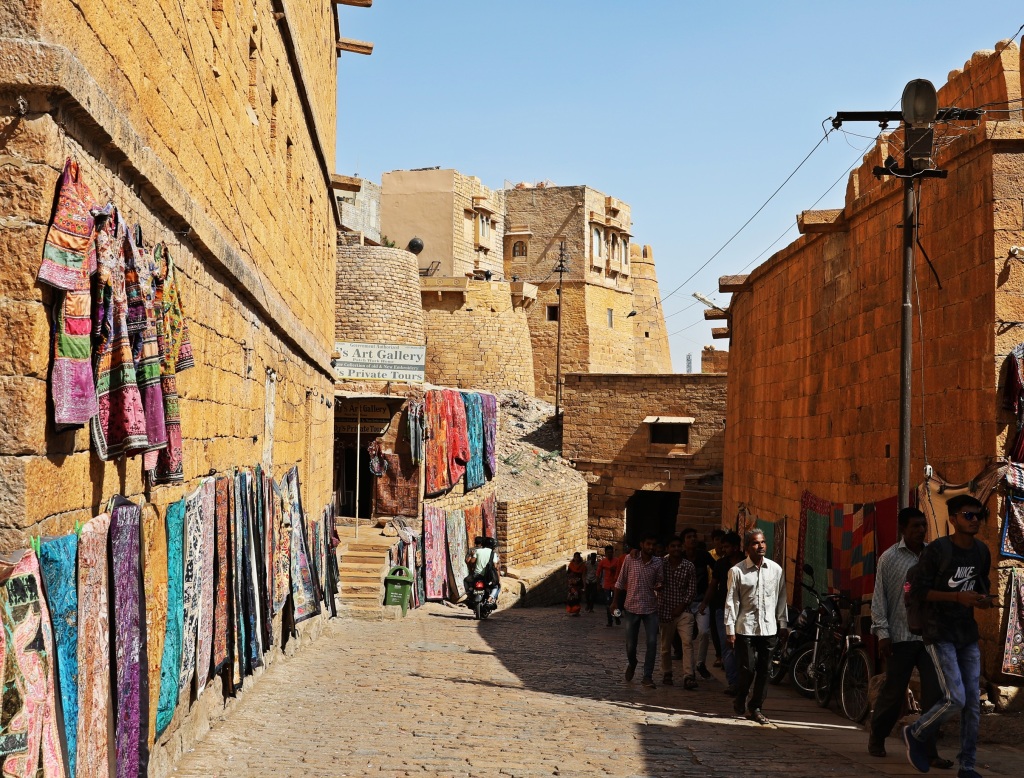
Street in Jaisalmer Fort 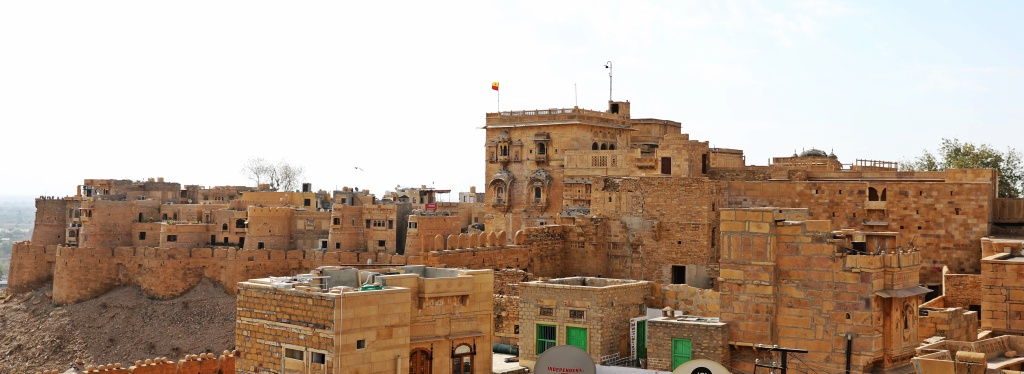
View from our hotel of Jaisalmer Fort 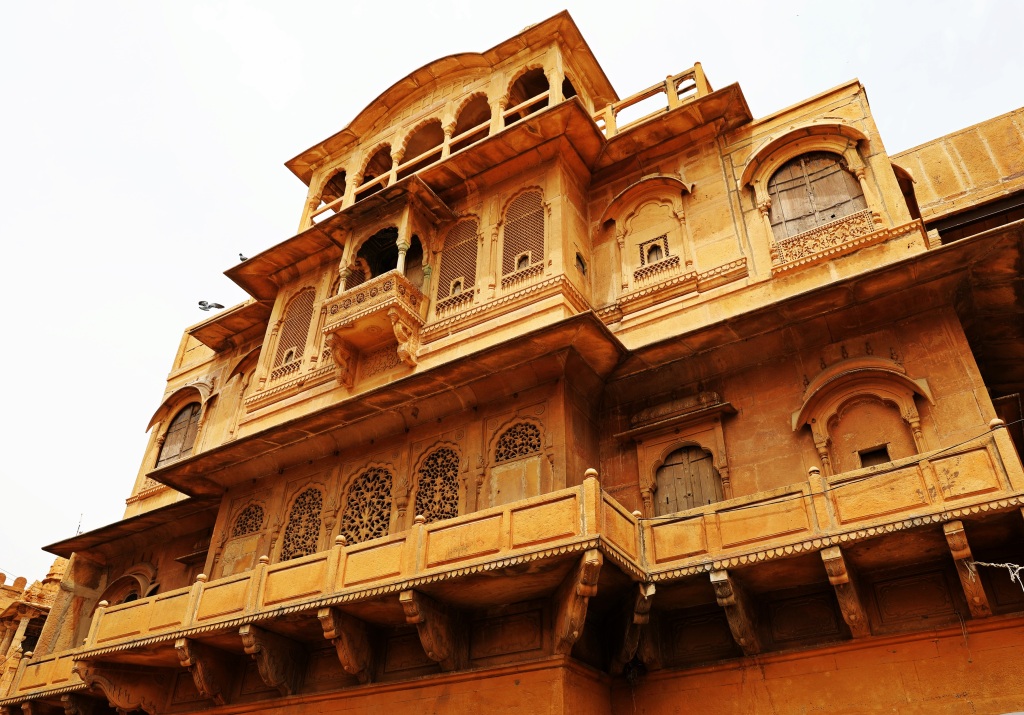
Haveli in Jaisalmer Fort 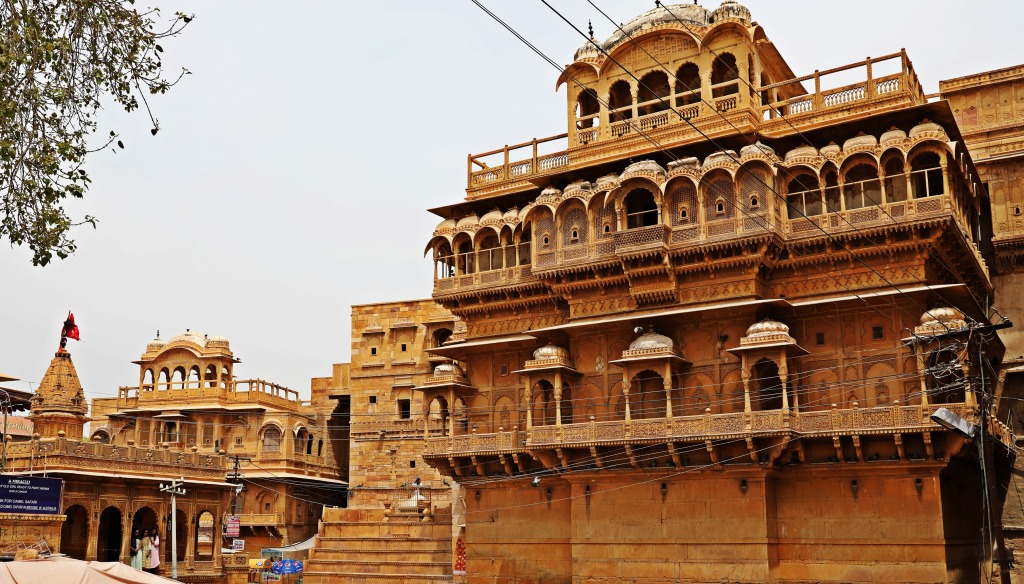
Haveli in Jaisalmer Fort 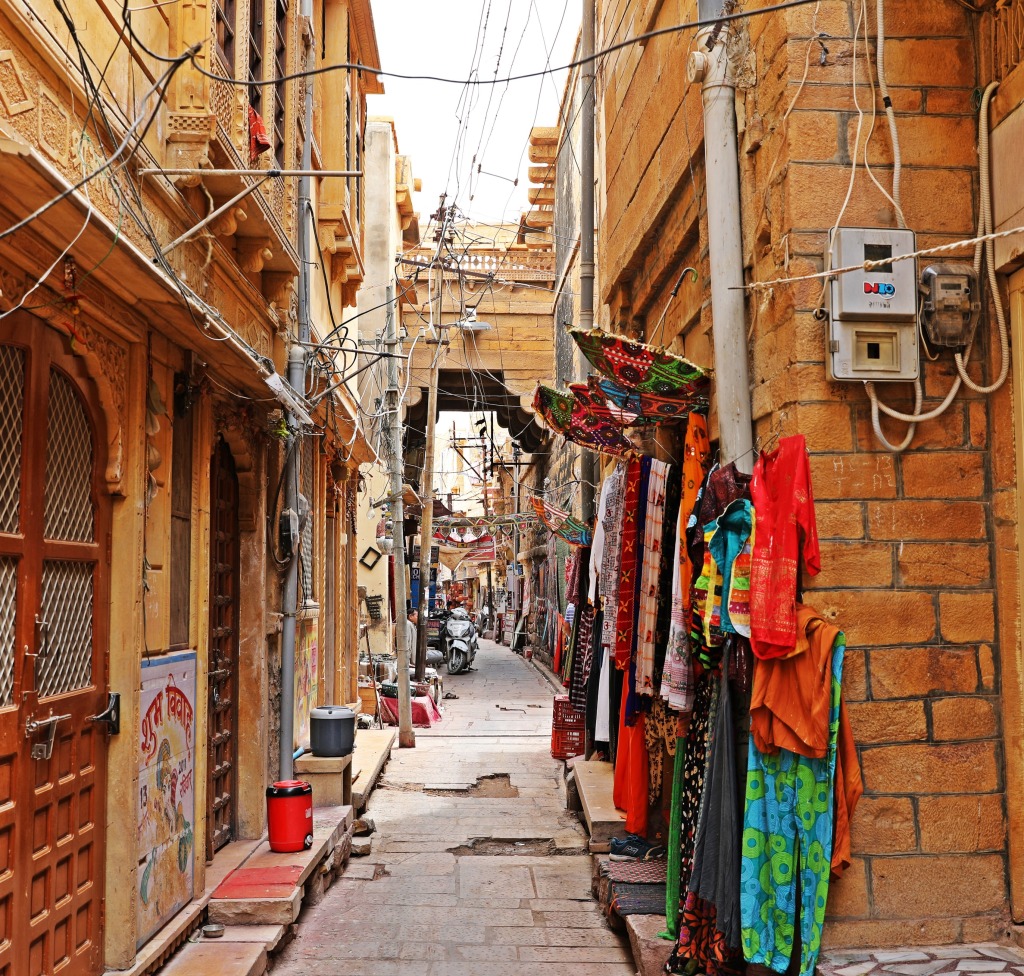
Narrow street in Jaisalmer Fort 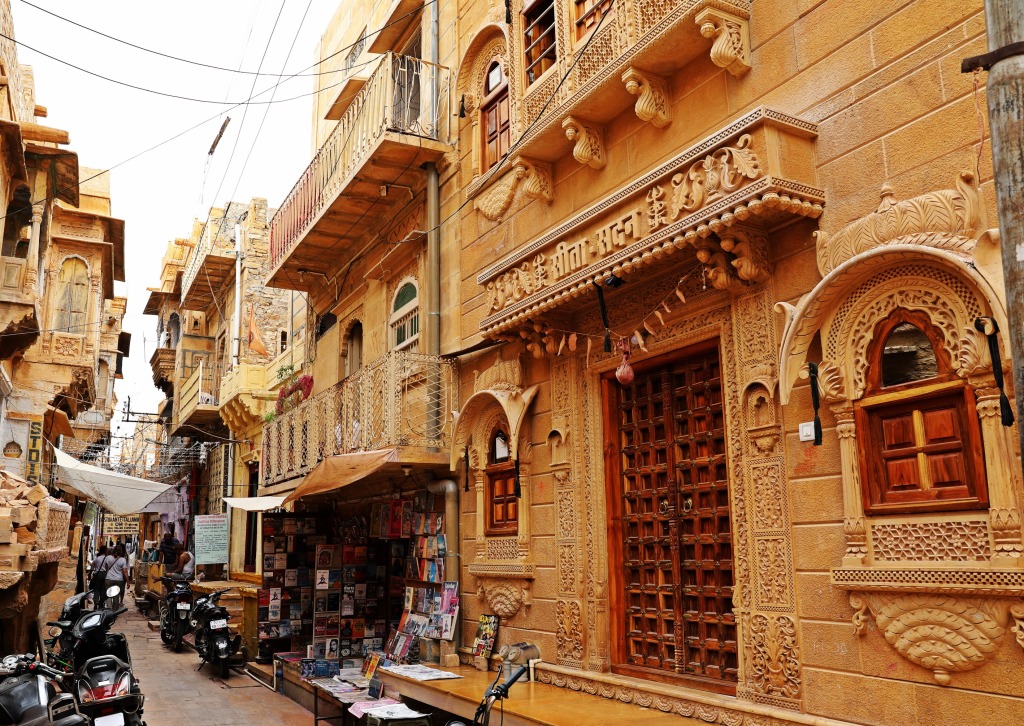
Narrow street in Jaisalmer Fort
The traditional Rajasthani turban is still worn by older men and we saw a few of them in town. Different regions in Rajasthan have different coloured turbans and different ways to tie them. Most of the people that live in the fort are from the Brahmin caste, which is the highest level in the Indian caste system. Brahmins are vegans and also don’t eat onions or garlic because the smell is offensive. That’s nice, but then we really don’t understand how they can tolerate dog dung all over the streets and the smell of open sewage.
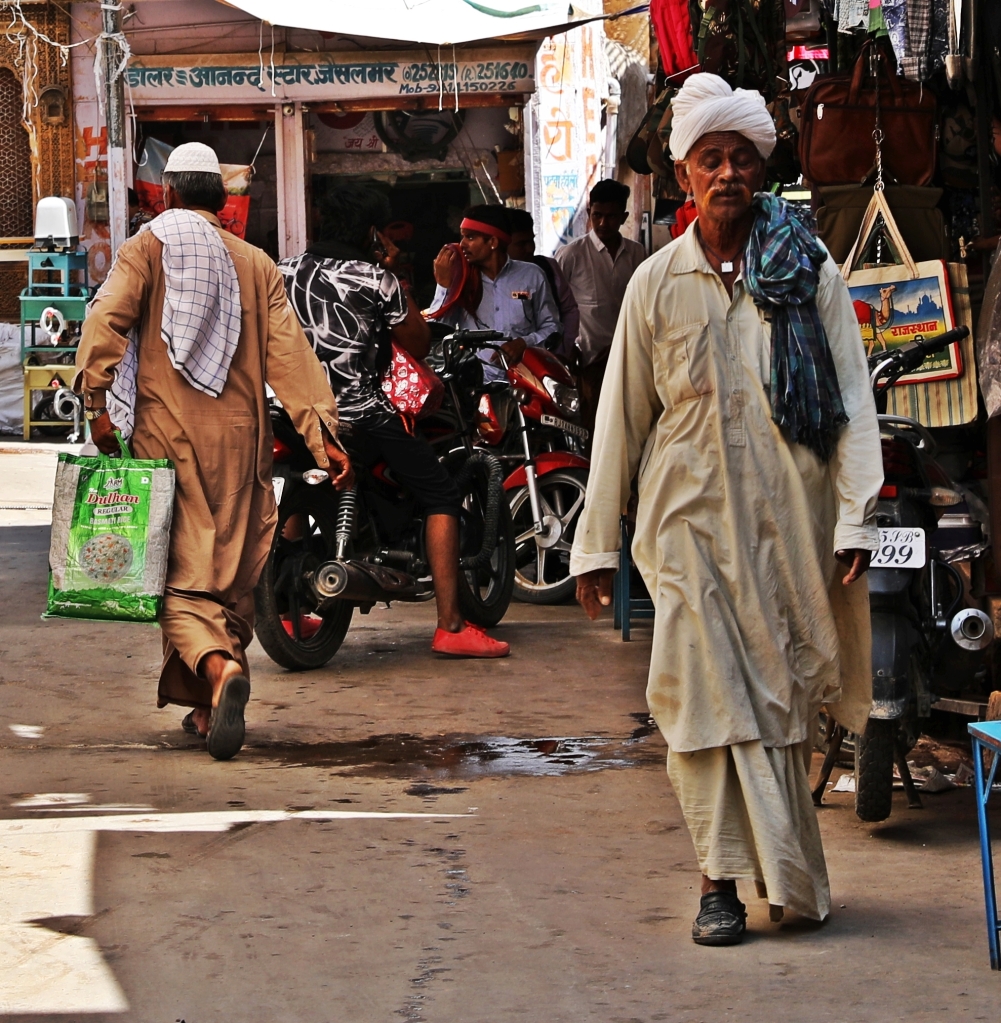
Rajasthani man, Jaisalmer 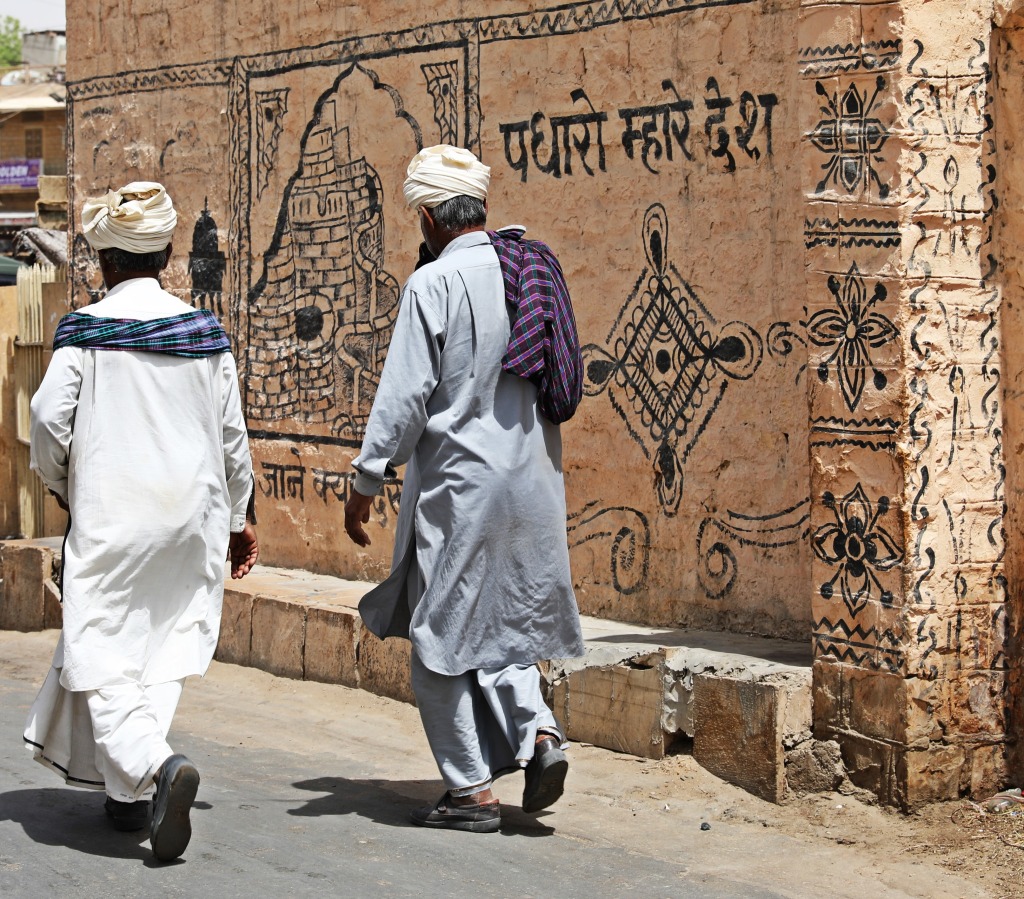
Rajashtani men in traditional turbans, Jaisalmer 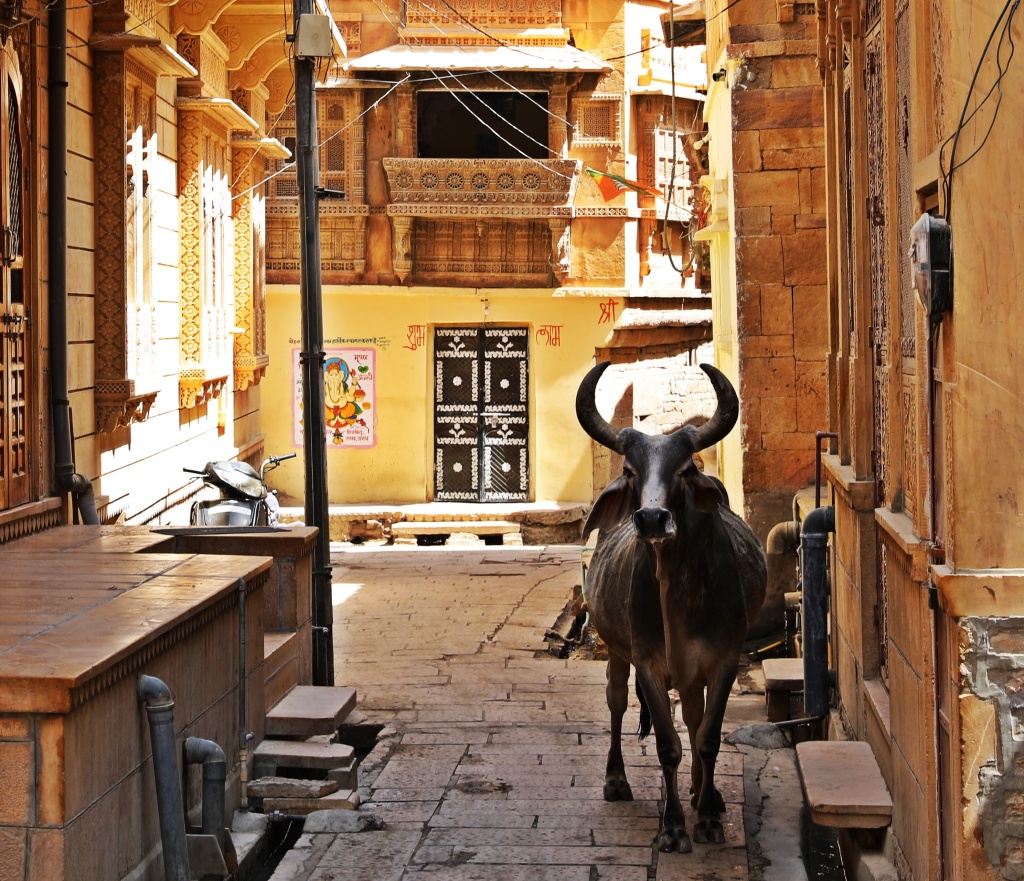
Street cow, Jaisalmer 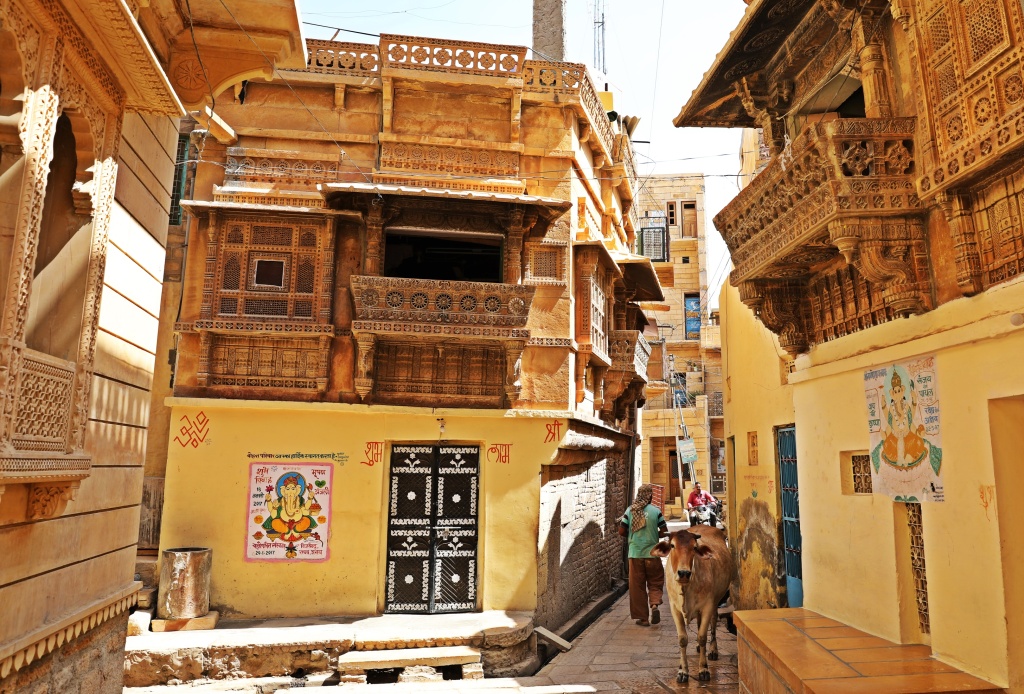
Street cow, Jaisalmer
Compared to the ornate carvings on the homes and temples, Raj Mahal (Royal Palace) inside the fort is relatively bland. There are a few carved balconies and columns, but most of the walls are plain, undecorated sandstone. It seems strange that the palace is so underwhelming considering the rest of the town is very elaborate.
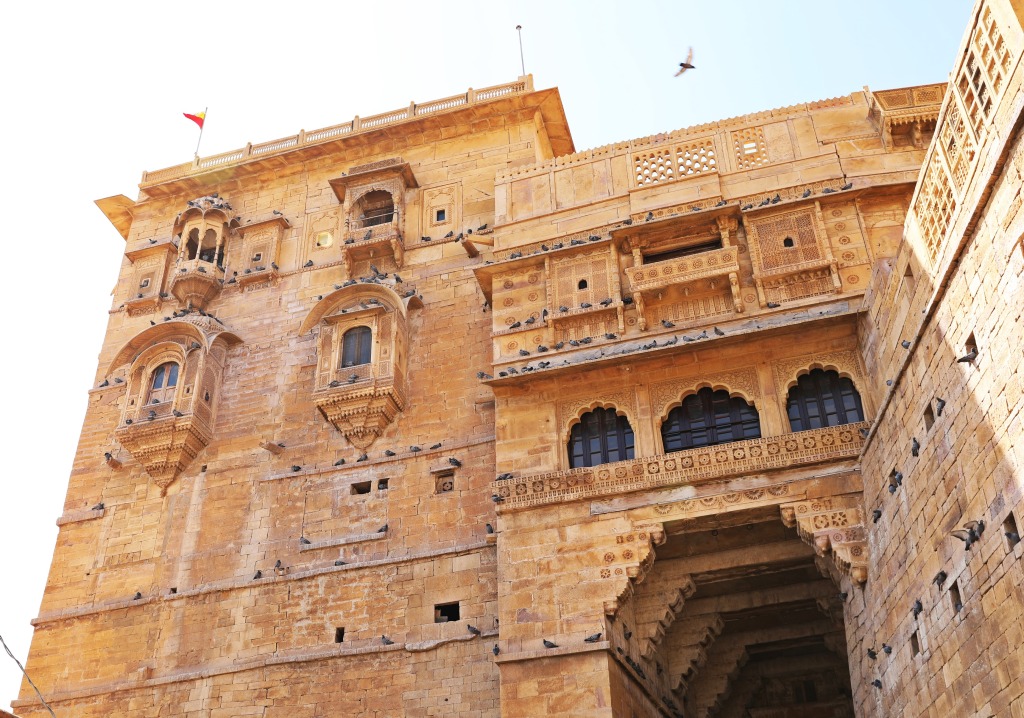
Raj Palace, Jaisalmer Fort 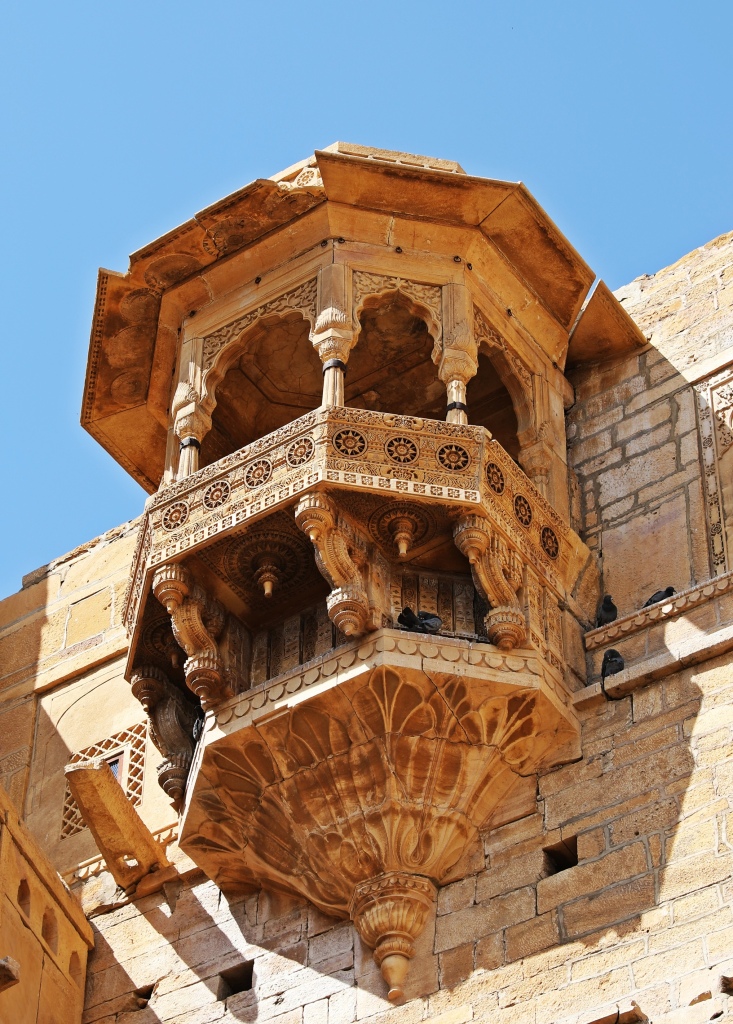
Queen’s Balcony, Raj Palace, Jaisalmer Fort 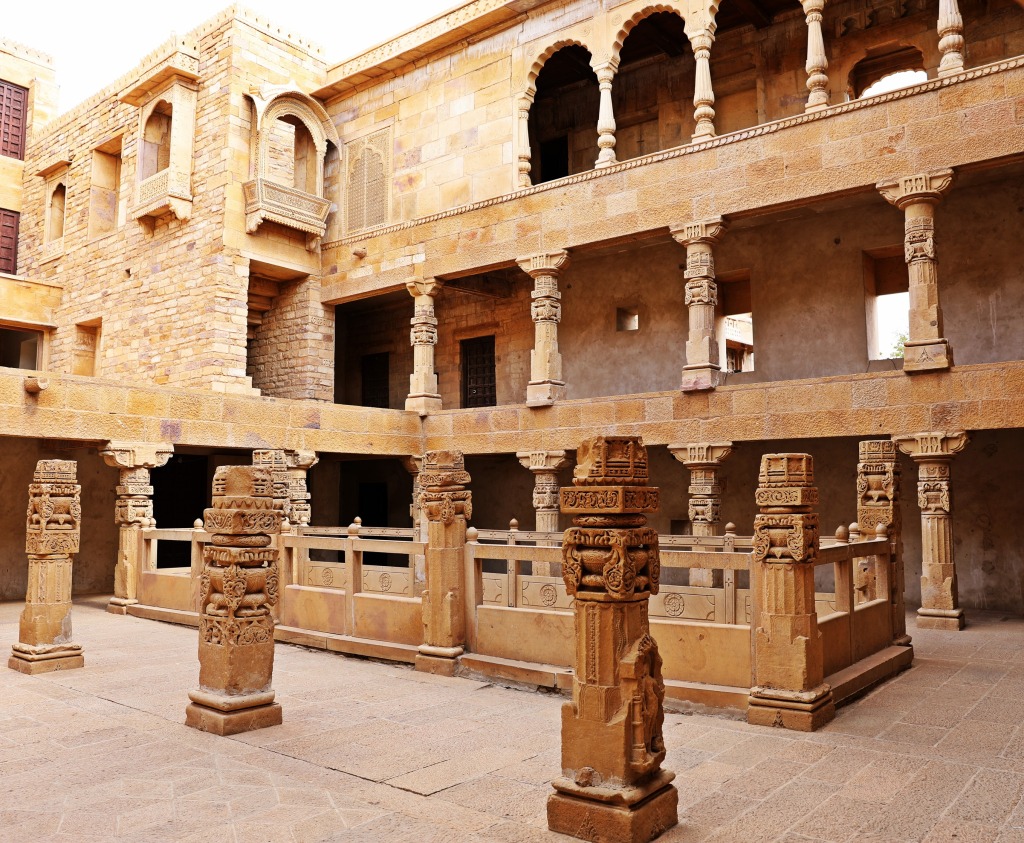
Interior of Raj Palace, Jaisalmer Fort
There are many temples inside the fort, but the seven Jain temples are the most exquisite. Built between the 12-15th centuries, every inch of the Jain temples’ walls, doors and columns have intricate carvings that look like wood carvings rather than stone. There are elaborate arch ways, called Torans that have extraordinary details. The Torans surround a vaulted ceiling which has more carved designs. Most temples have an inner shrine with a statue of a Jain Tirthankara (teacher). Around this shrine are statues of the other Tirthankaras. There are carvings on the walls of mythical creatures, and people, some clothed and some nude. Jain priests are minimalists and are commonly nude so this is carried through in the artwork. One of the temples has brightly painted walls, columns and ceiling.
Beside the palace, the Hindu temple, Laxminath Temple, is plain on the inside, but the outside is beautiful. The windows were carved to look like fine lace and the doors like wooden lattice.
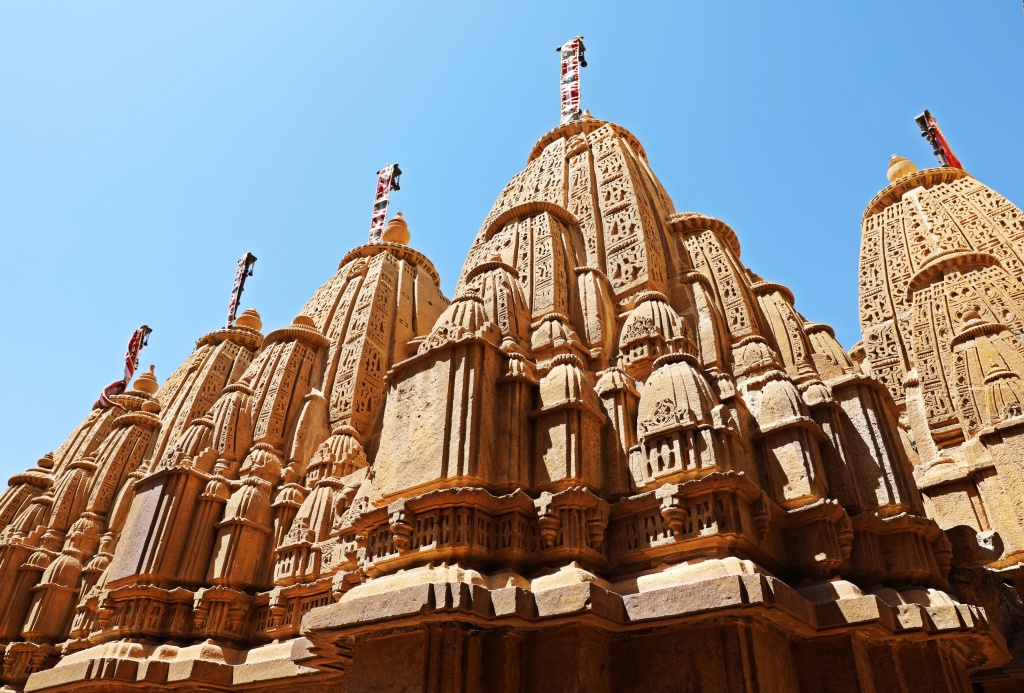
Roofs of Jain Temples, Jaisalmer Fort 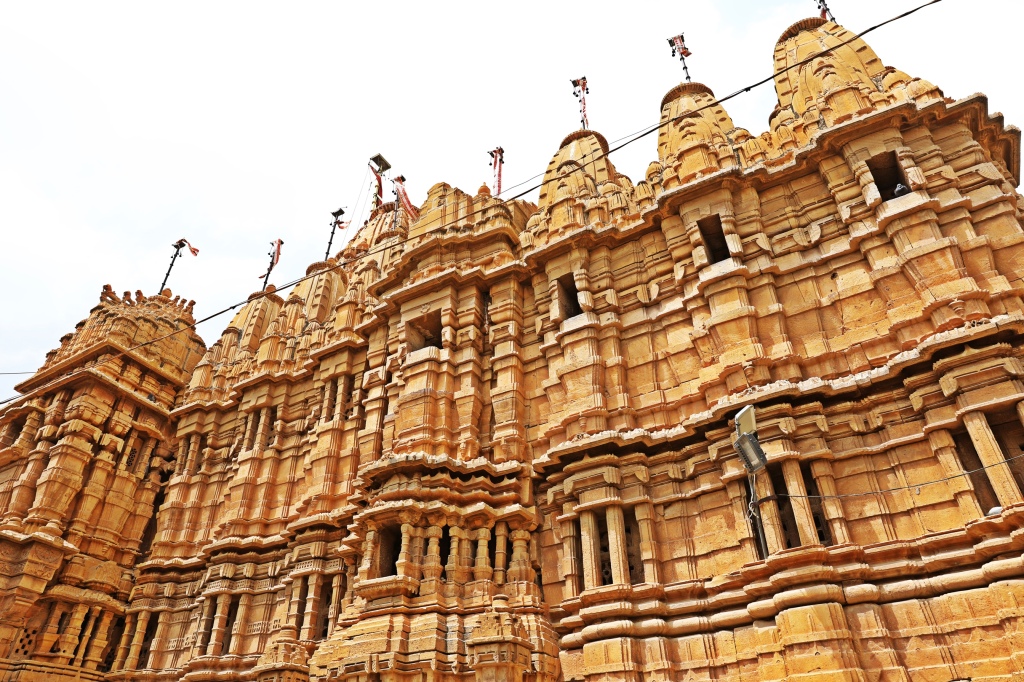
Jain Temple, Jaisalmer Fort 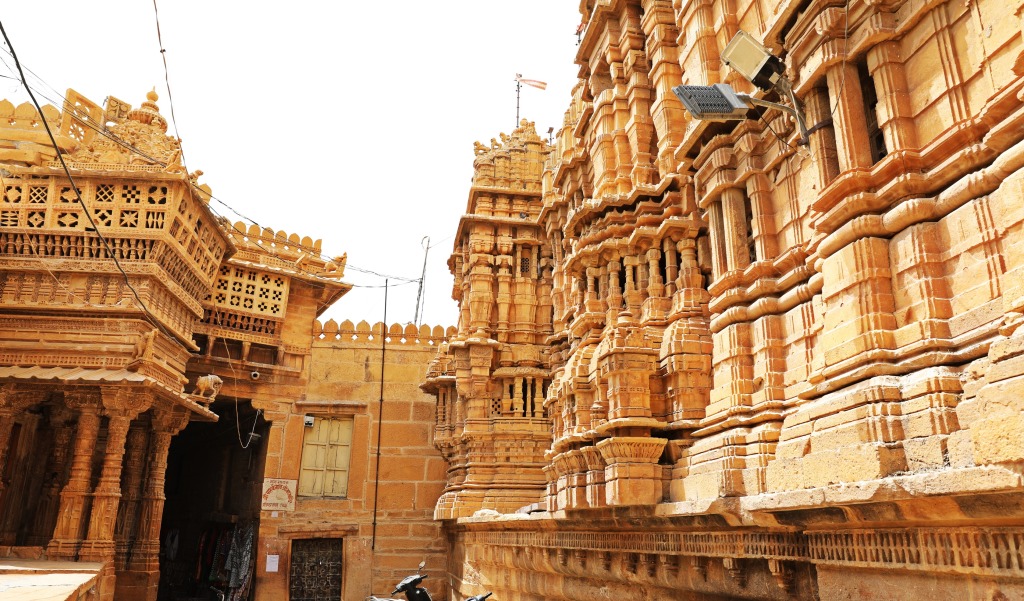
Jain Temple, Jaisalmer Fort 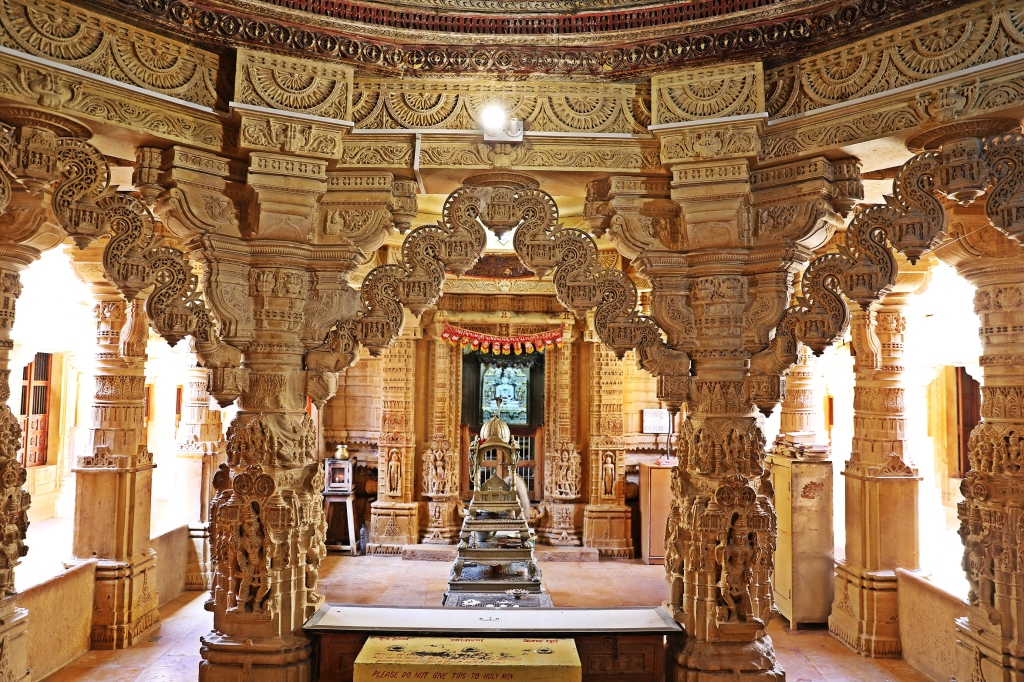
Intricately carved Torans, Jain Temple, Jaisalmer Fort 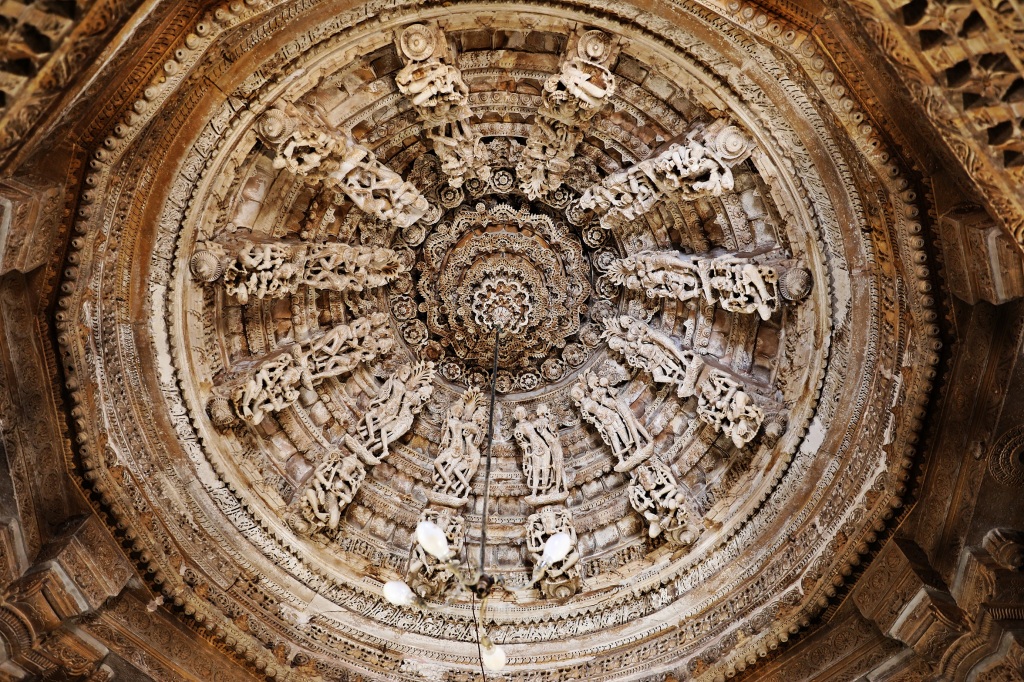
Carved ceiling, Jain Temple, Jaisalmer Fort 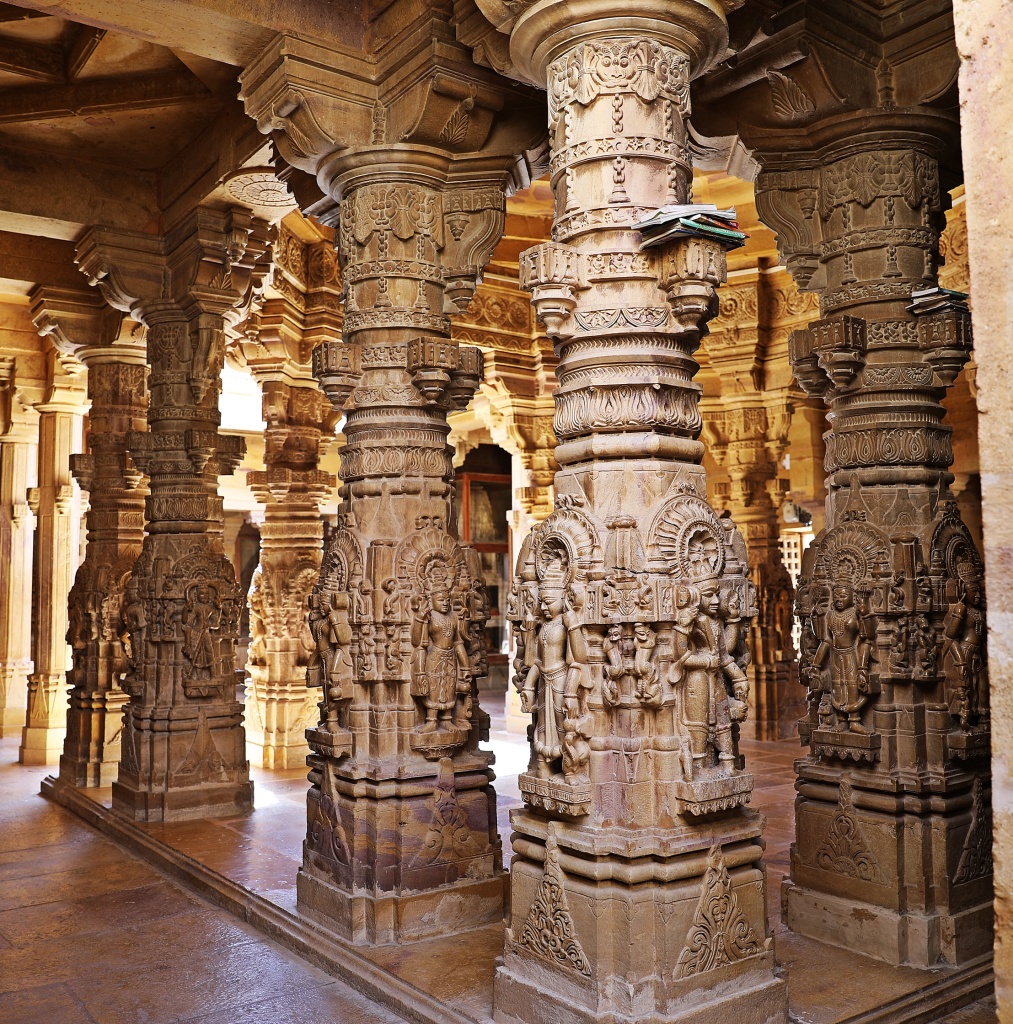
Carved columns, Jain Temples, Jaisalmer Fort 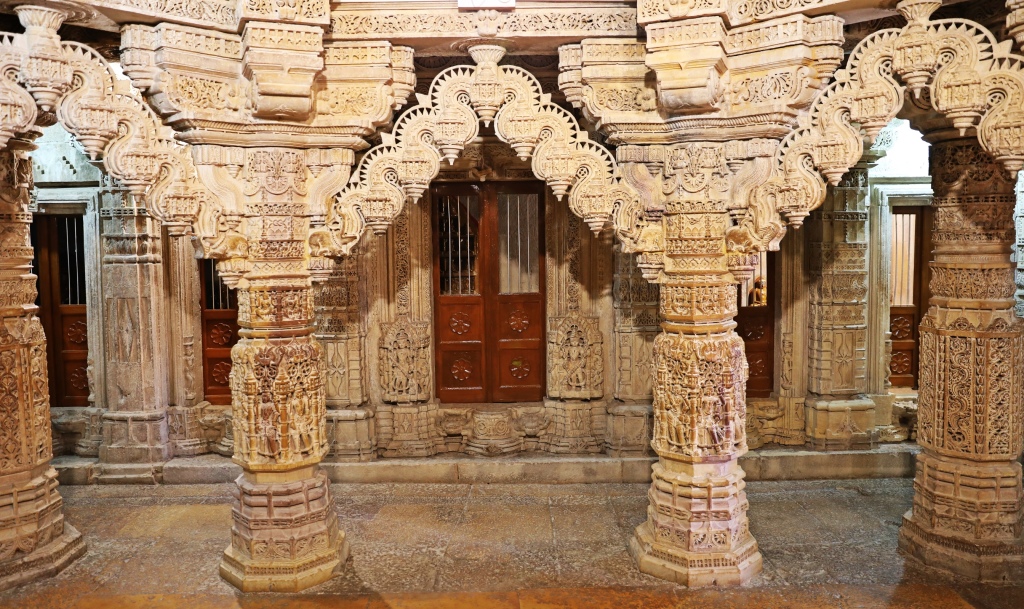
Ornately carved Torans, Jain Temple, Jaisalmer Fort 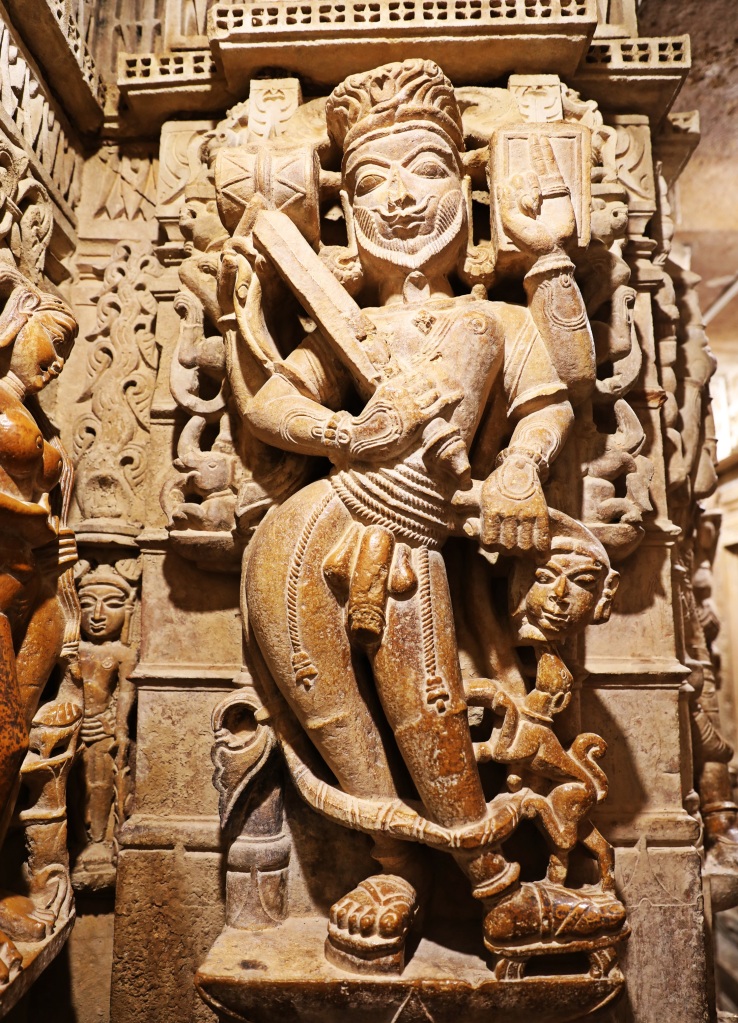
Naked statue, Jain Temple, Jaisalmer Fort 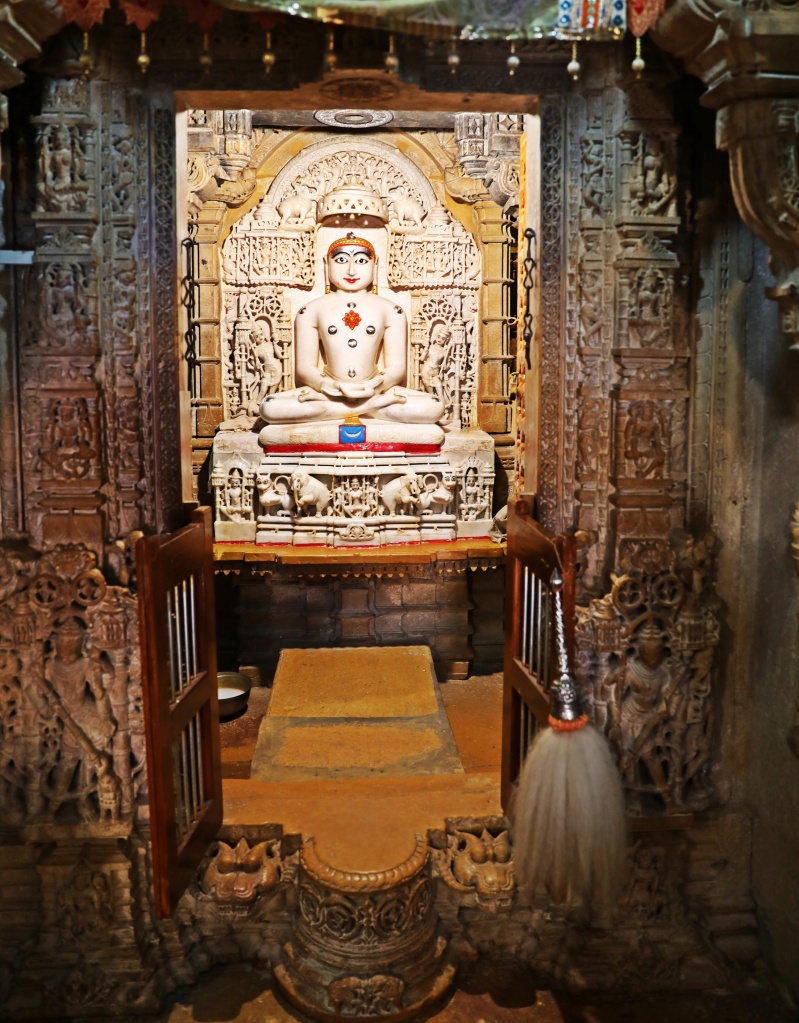
Jain teacher, Jain Temple, Jaisalmer Fort 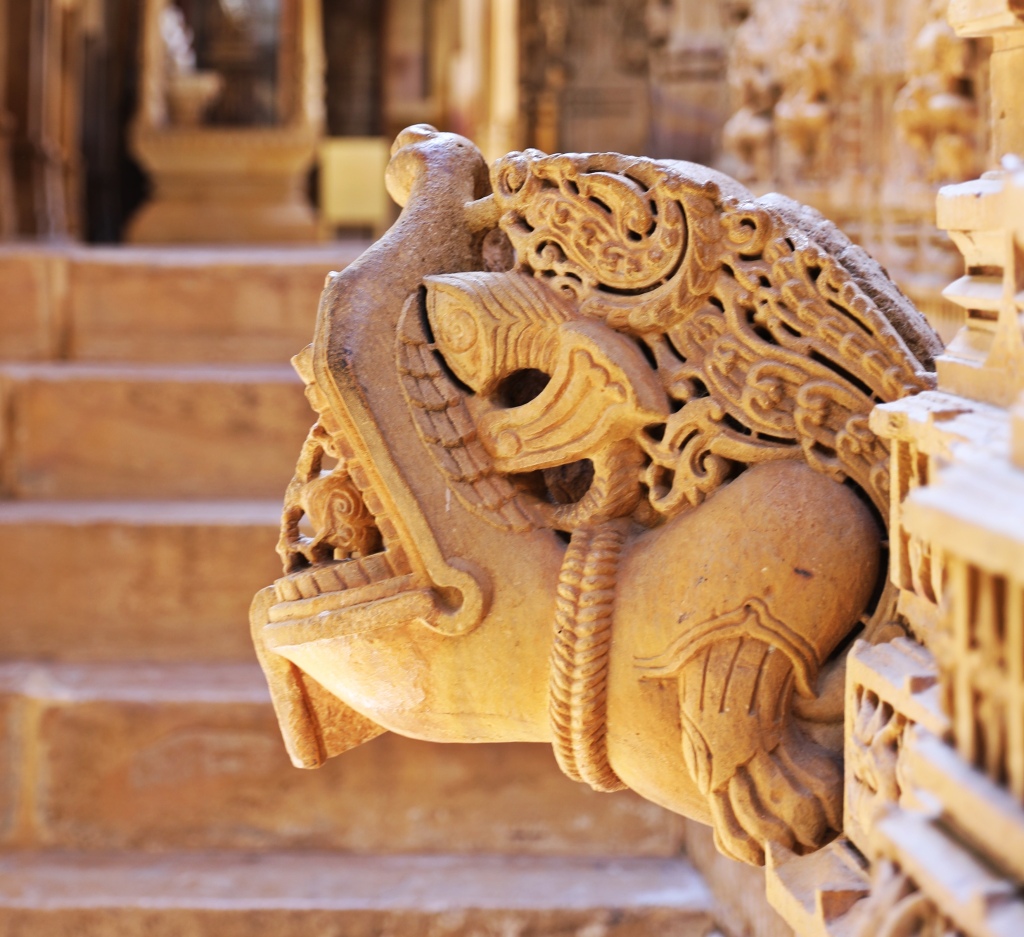
Mythical Creature, Jain Temple, Jaisalmer Fort 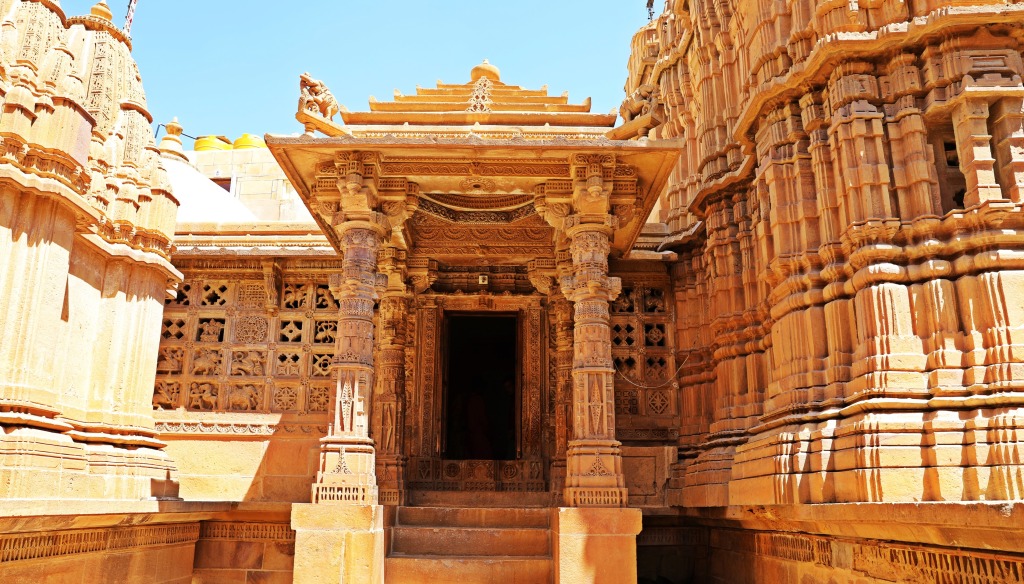
Jain Temples, Jaisalmer Fort 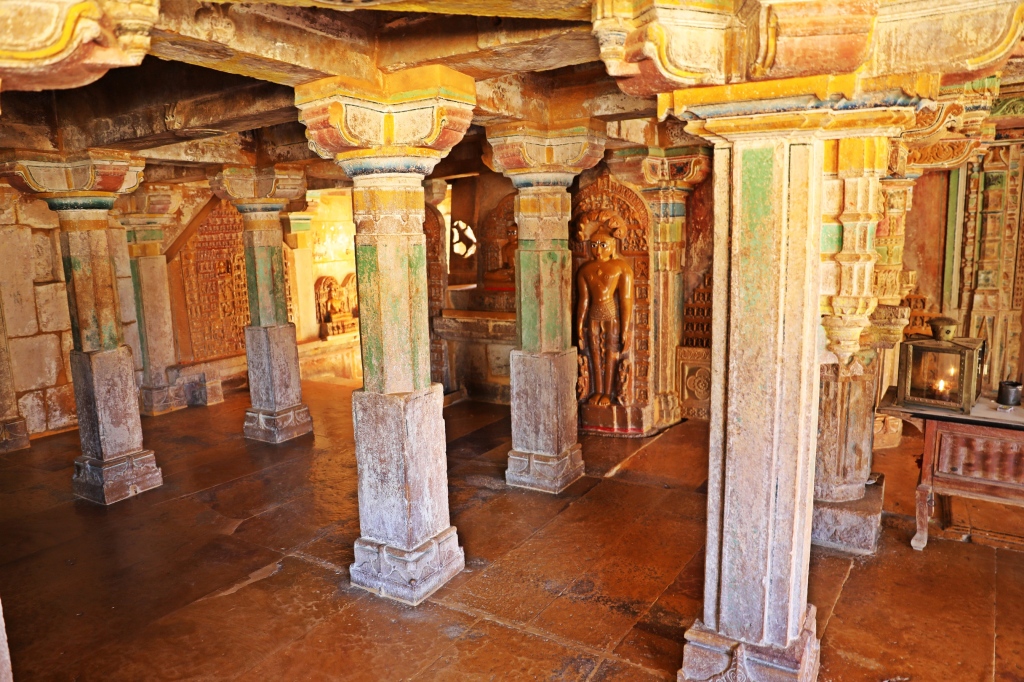
Interior of Jain Temple, Jaisalmer Fort 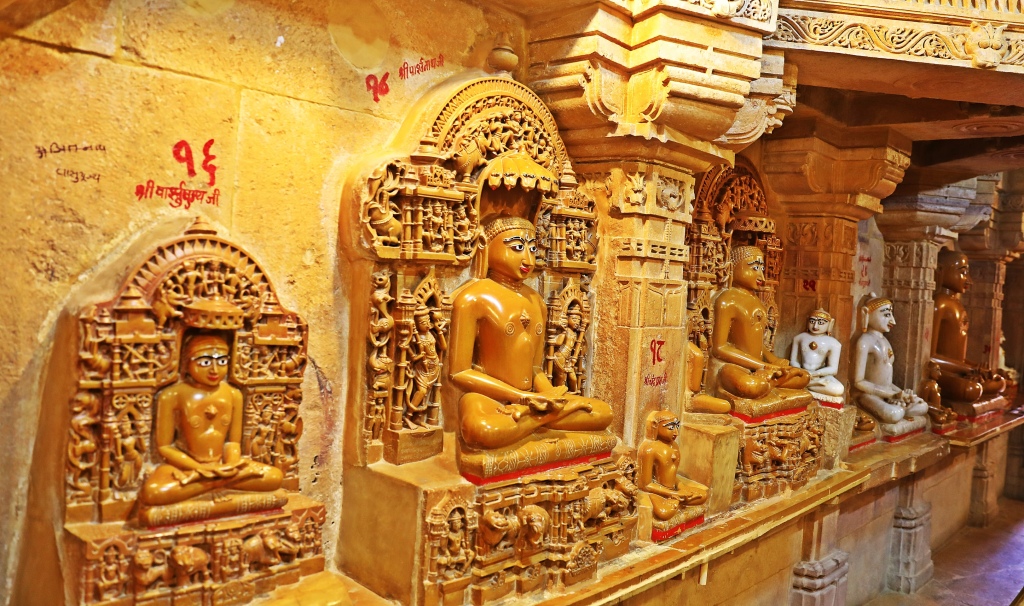
Statues of Jain teachers, Jaisalmer Fort 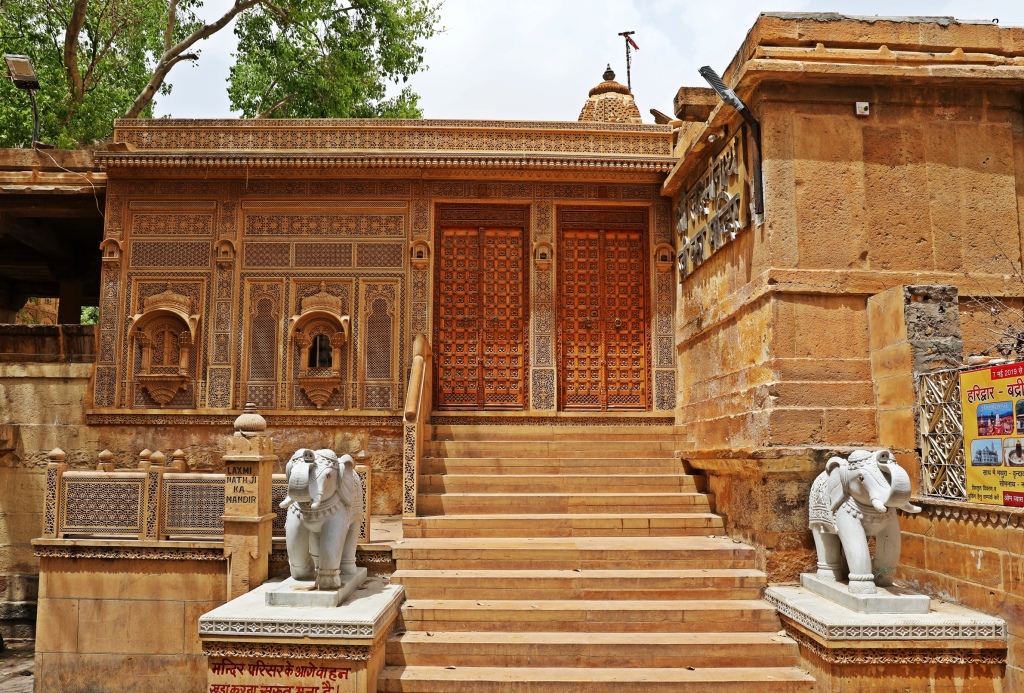
Laxminath Temple, Jaisalmer Fort 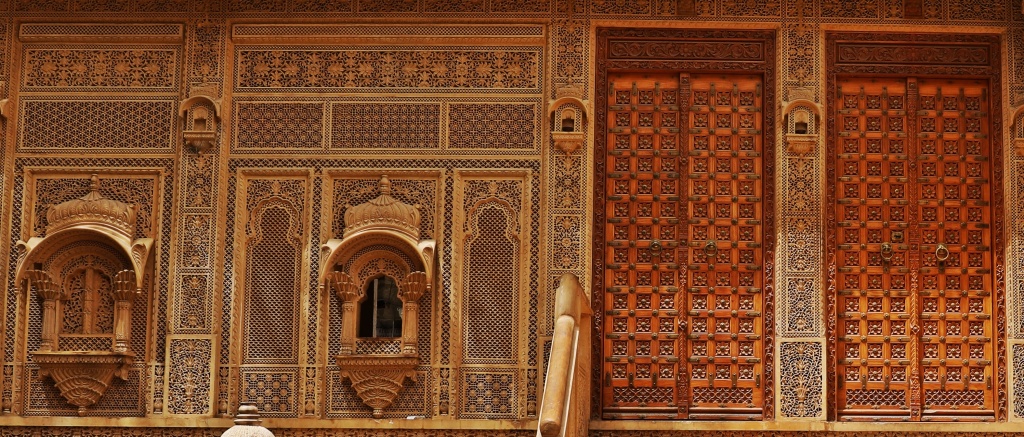
Intricate carvings, Laxminath temple, Jaisalmer Fort 
Outside of the fort, Jaisalmer has many incredible Havelis. These are traditional, ornately decorated mansions, typical in Rajasthan. These houses are architectural gems carved with amazing detail. Some were homes to prime ministers and community leaders while others were owned by opium dealers. Nathmal Ki Haveli has an interesting story as it was built by two brothers. They competed with each other to make their side of the house more beautiful. The result was two similar, but not exact sides of the Haveli. Can you spot the small differences between the right and left sides of the first Haveli pictured below?
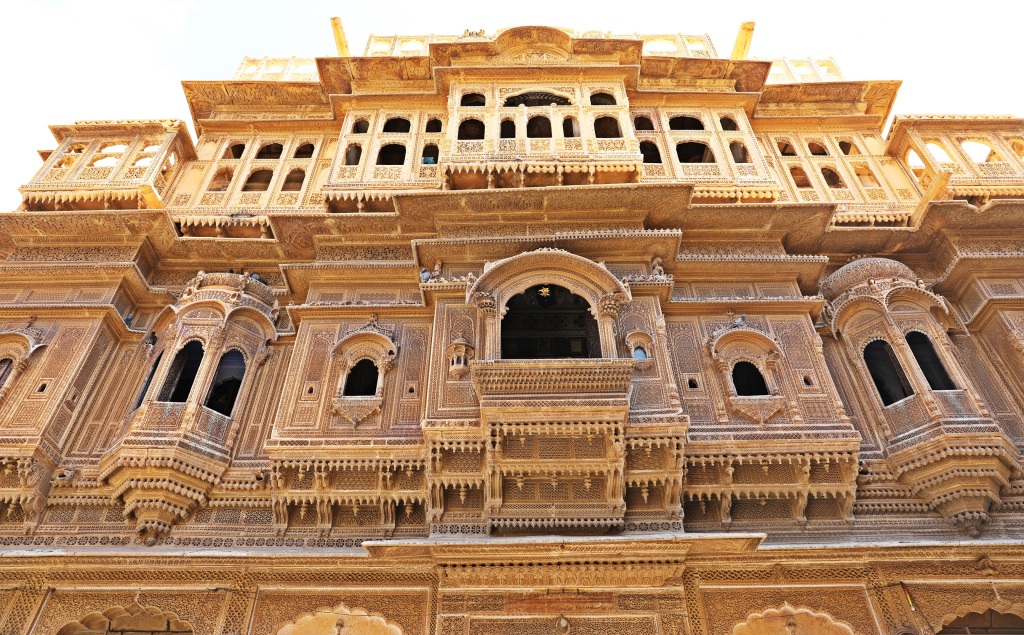
Nathmal Ki Haveli, Jaisalmer 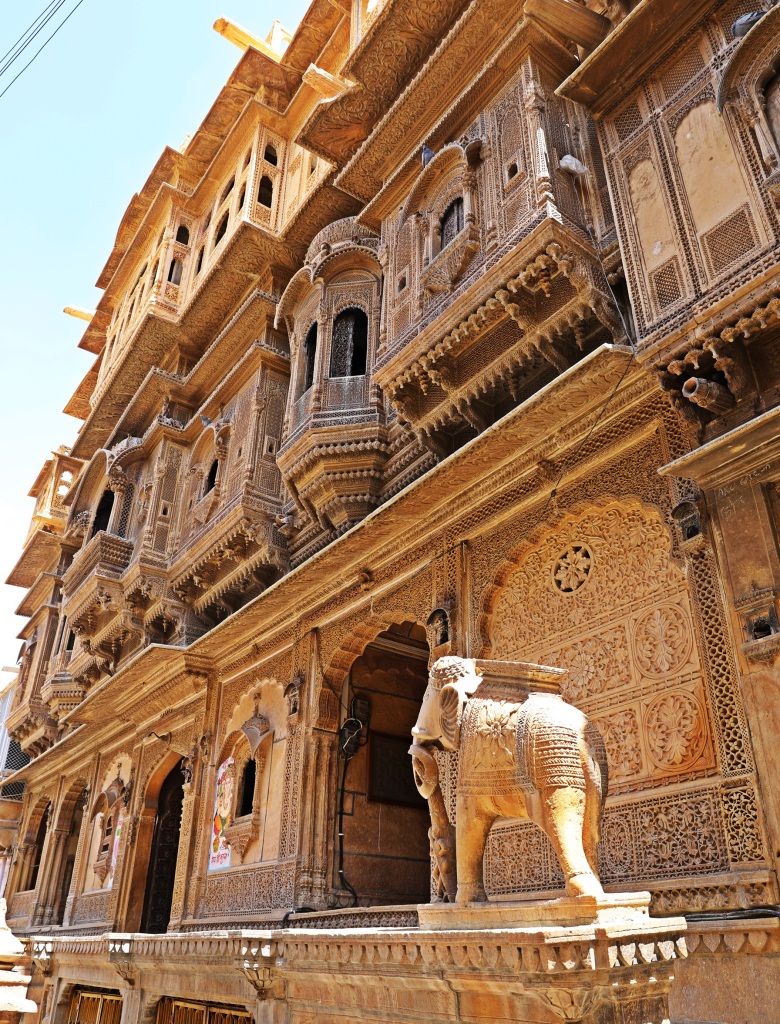
Nathmal Ki Haveli, Jaisalmer 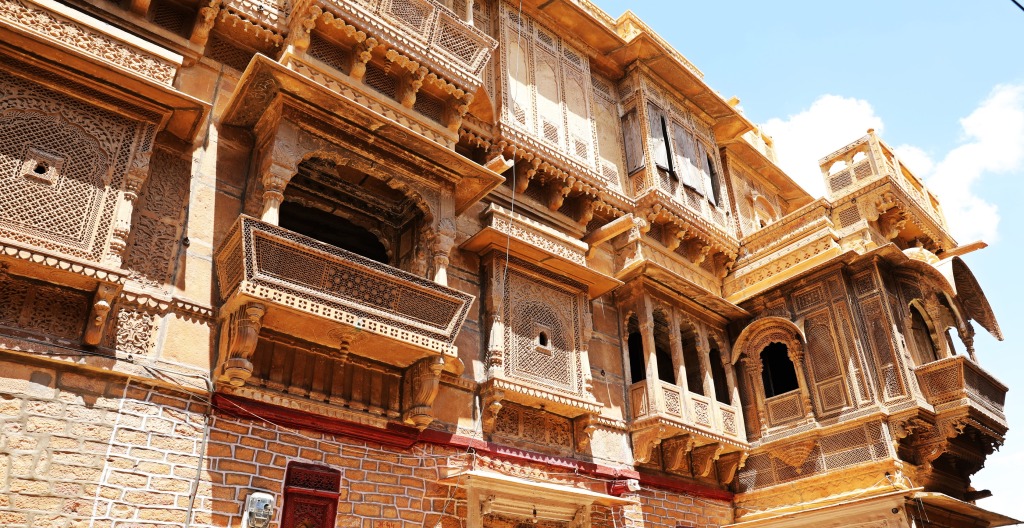
Ornate Havelis, Jaisalmer 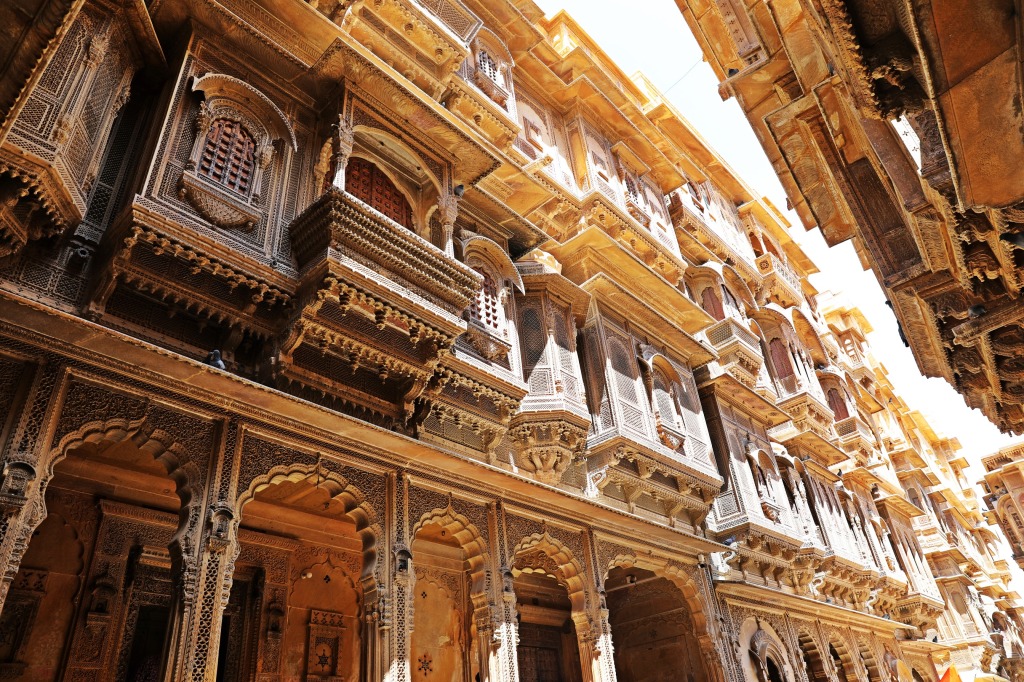
Windows of Havelsi, Jaisalmer 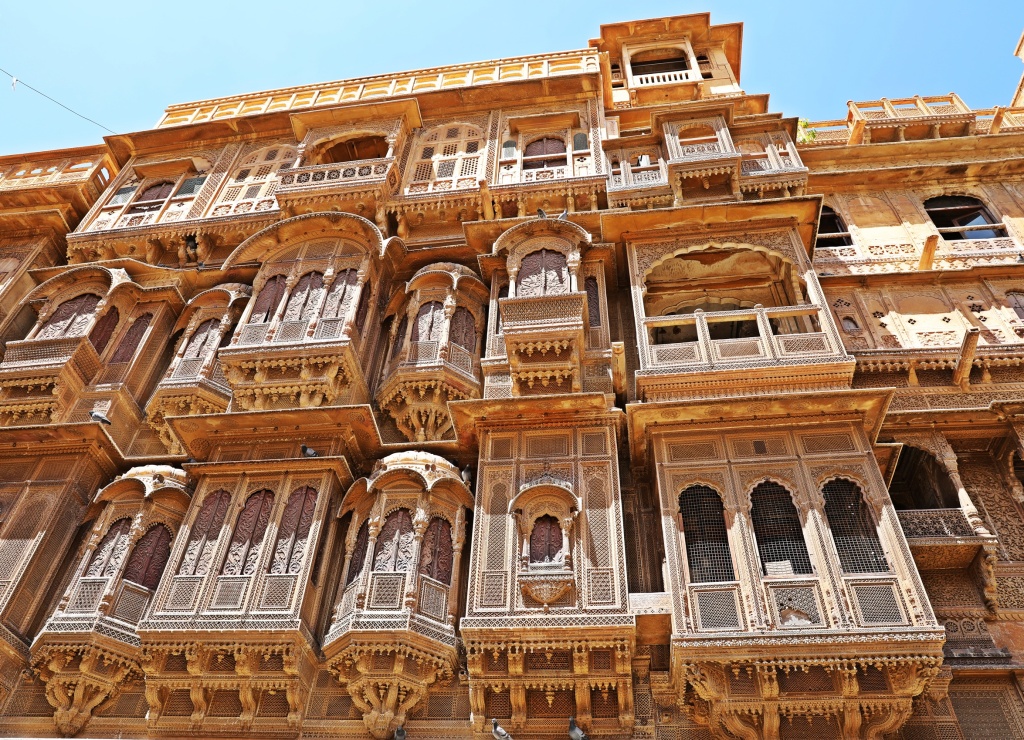
Windows of a Haveli, Jaisalmer 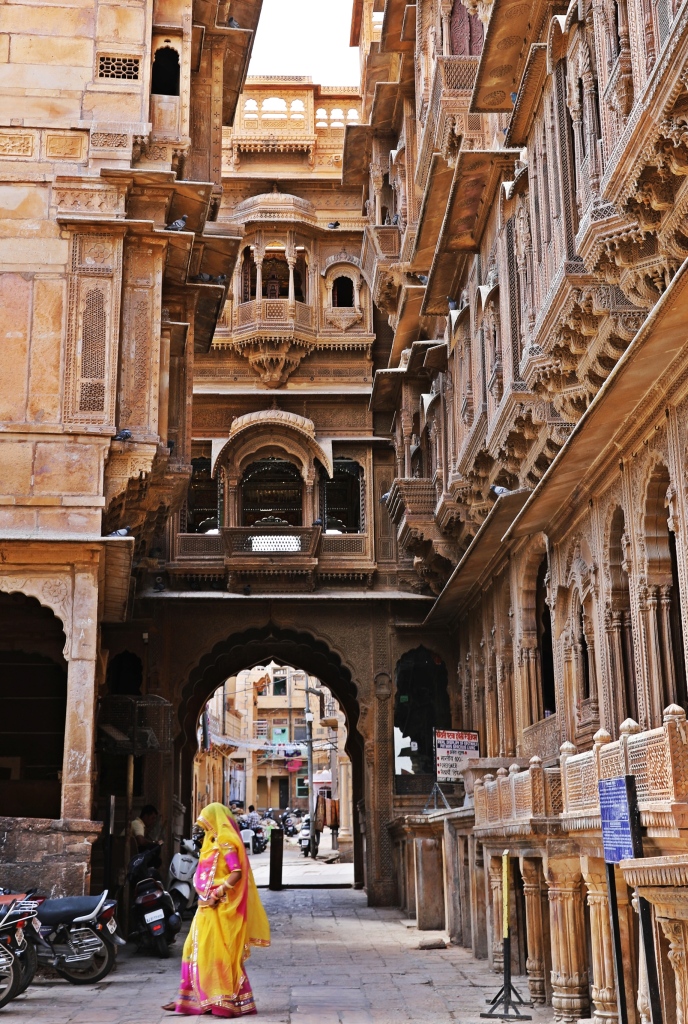
Haveli over the road, Jaisalmer 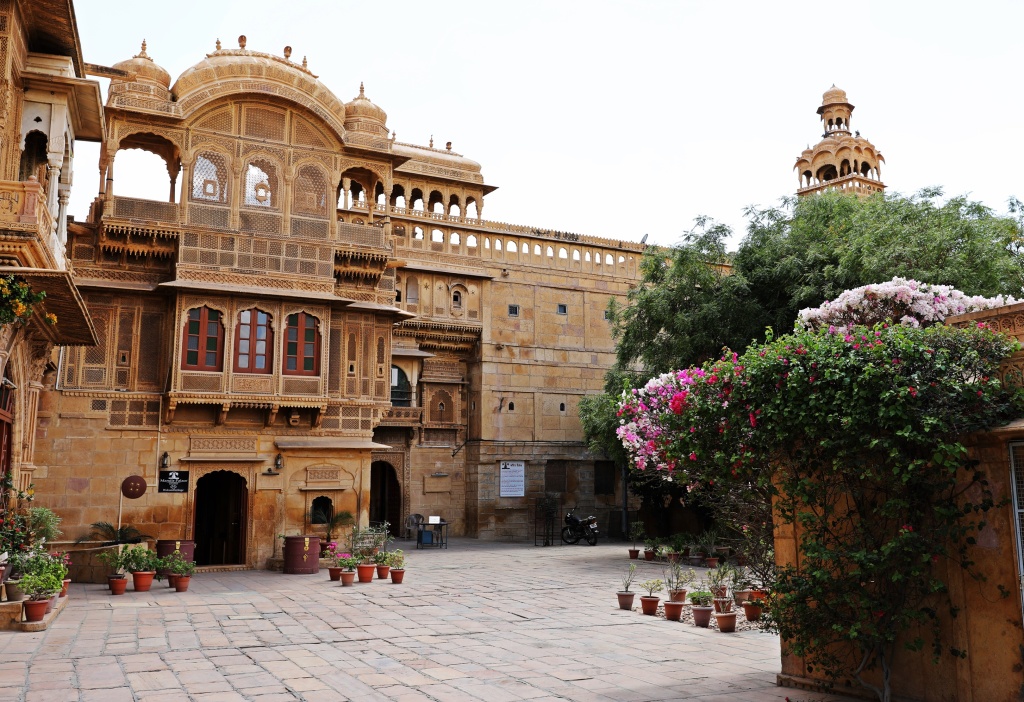
Mandir Palace Hotel, Jaisalmer 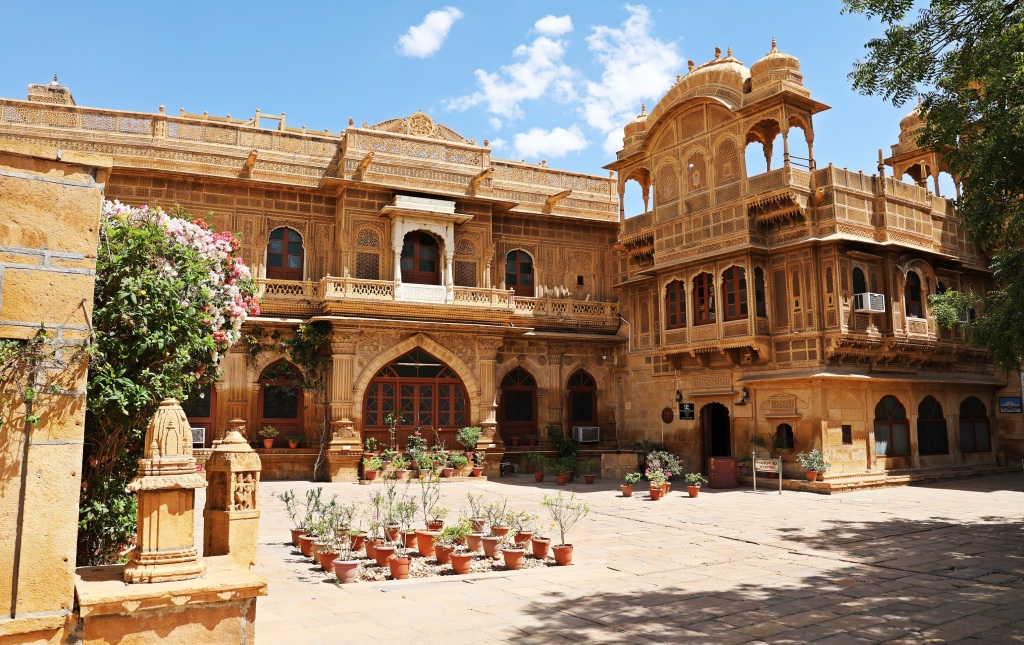
Mandir Palace Hotel, Jaisalmer 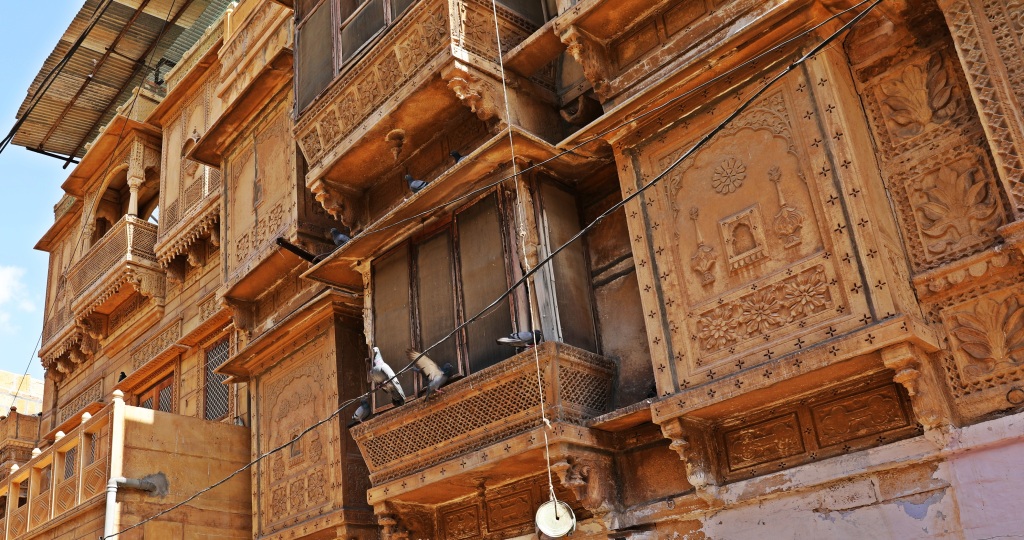
Ornate windows, Jaisalmer
The small man-made Gadisar Lake has a small temple in the middle. After monsoon season, the temple appears to be floating on the lake. We visited during dry season, so the lake was very shallow and it didn’t have the same effect. The lake was originally used as a water reservoir for the city, but now there is a modern pipeline that bring water to this desert town.
There is a group of cenotaphs at the lake and another group of them in the north end of the city. Cenotaphs are memorials that are commonly used in Rajasthan. They have a very nice design, and we think they are quite photogenic.
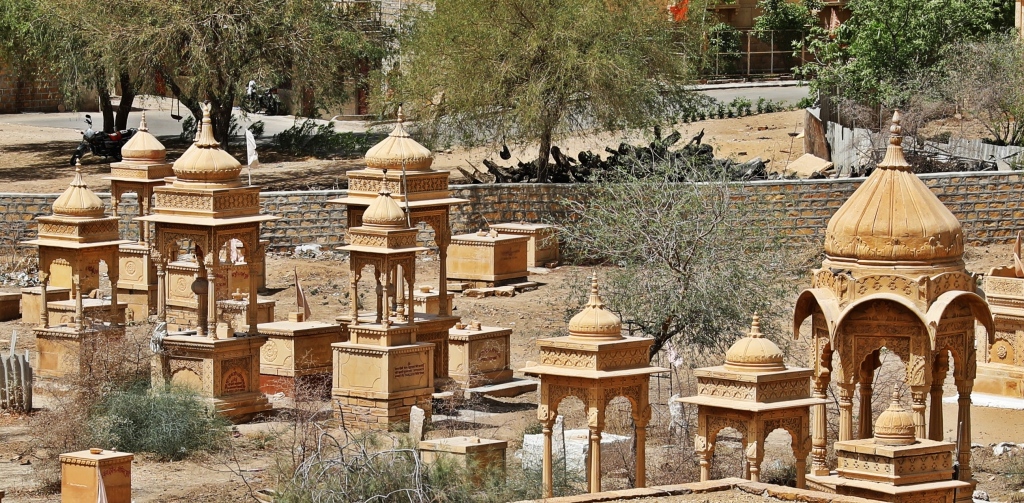
Cenotaphs, Gadisar Lake, Jaisalmer 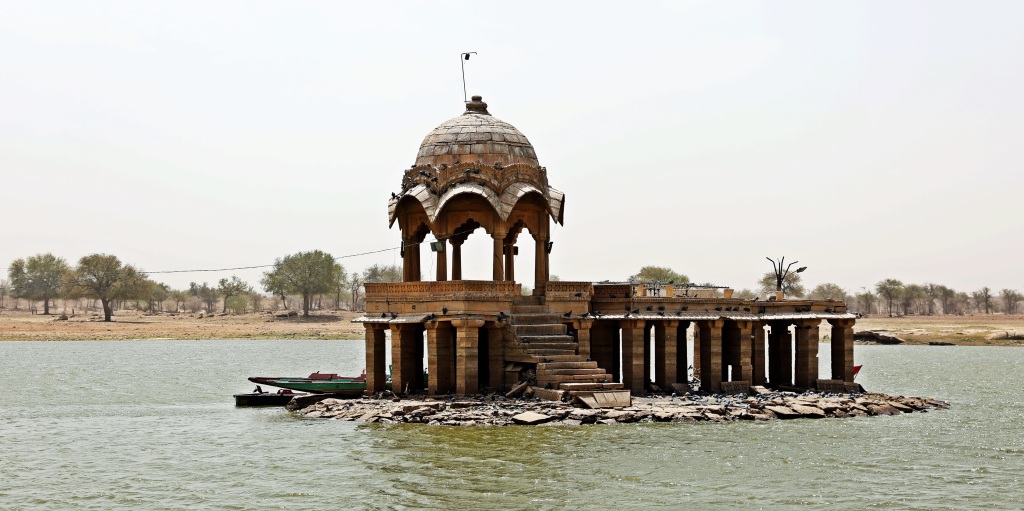
Temple, Gadisar Lake, Jaisalmer 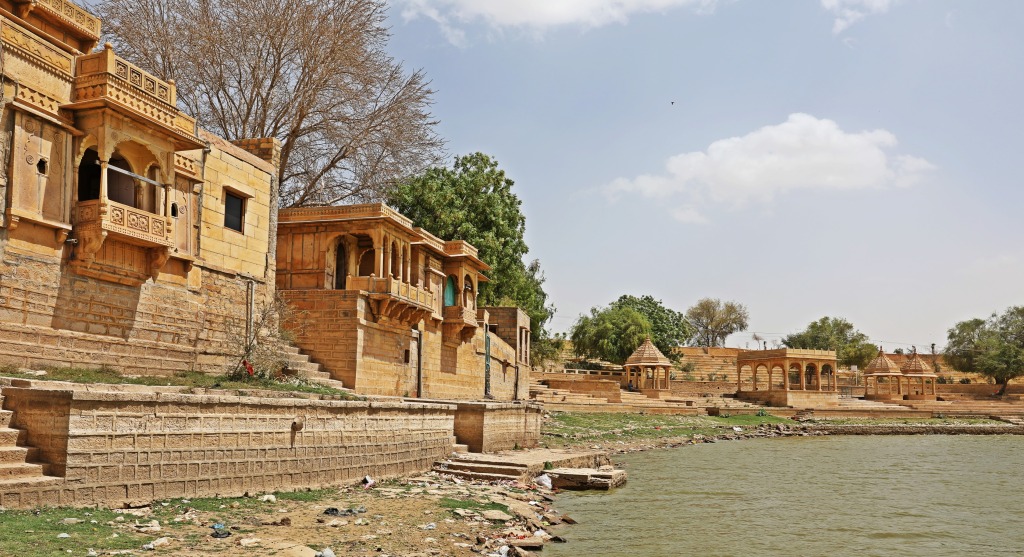
Gadisar Lake, Jaisalmer 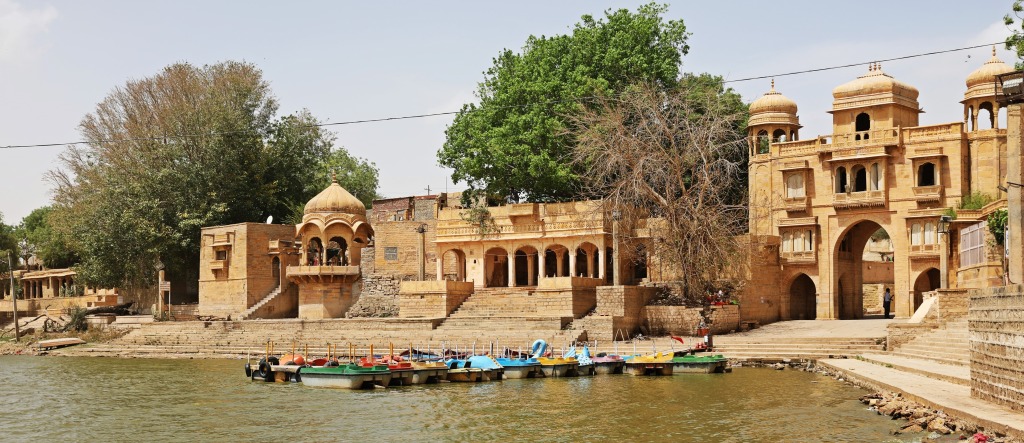
Gadisar Lake, Jaisalmer 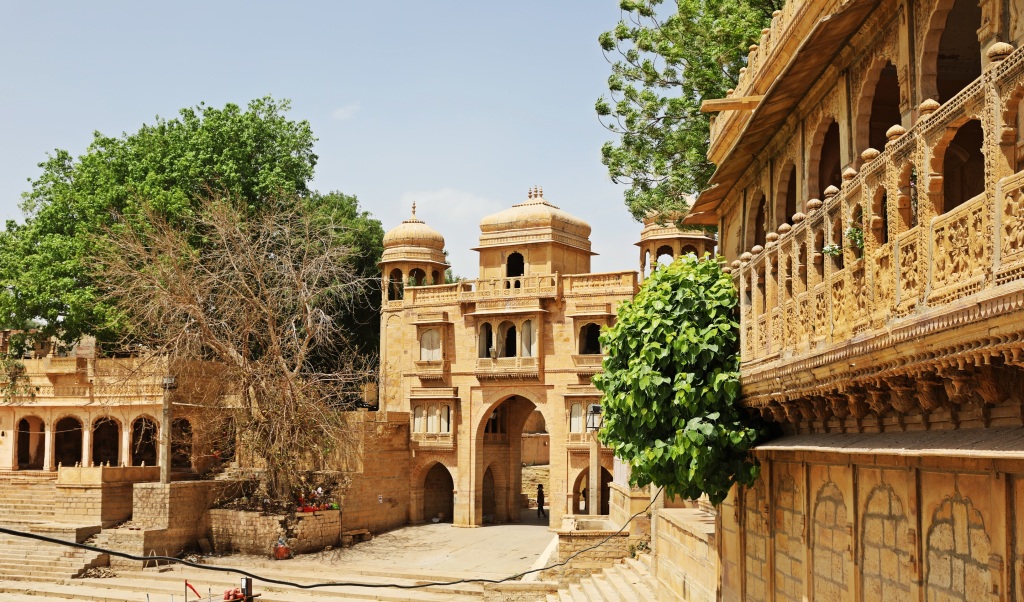
Gate to Gadisar Lake, Jaisalmer 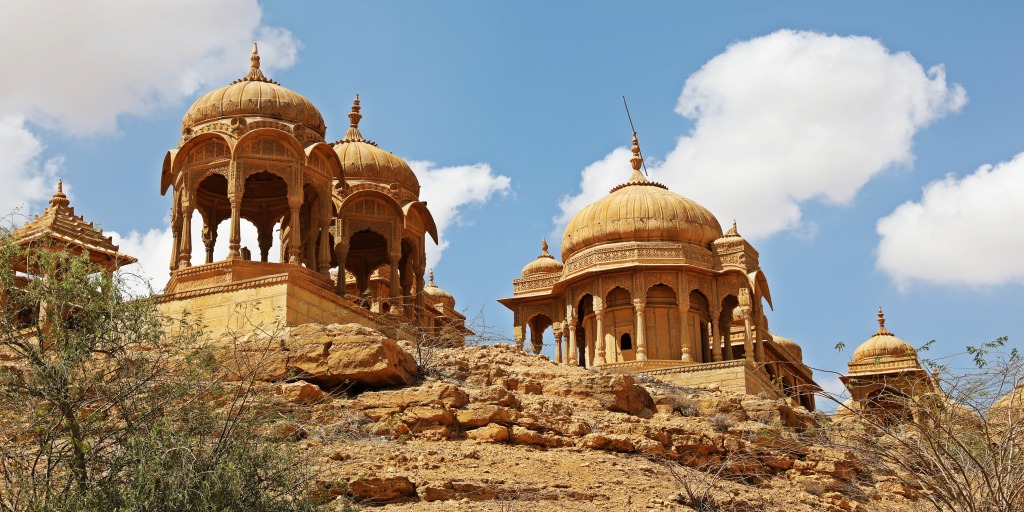
Cenotaphs, Jaisalmer 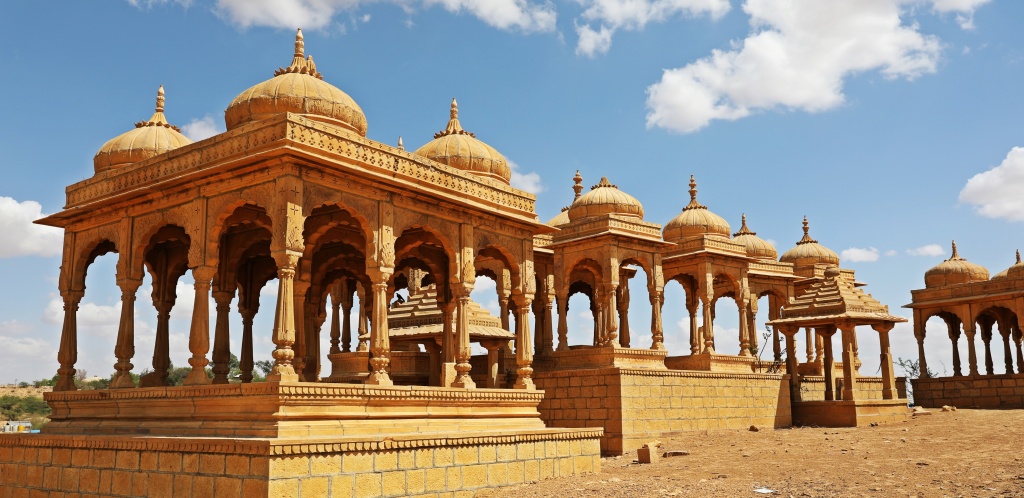
Cenotaphs, Jaisalmer
Staying in the desert, how could we not go for a camel ride? These awkward looking animals are equally awkward walkers. Sitting on them isn’t exactly comfortable, but it is fun. We rode Raj and Lela through the sand dunes of the Thar desert. The desert has a few plants and birds, but is mostly desolate. There is, however, an incredible beauty in the natural waves of the golden sand dunes that can’t be duplicated. While our guides were cooking our dinner over an open fire, we watched the sun set behind the desert giving the sky a red glow. We visited Jaisalmer in the spring. In the day it was over 40°C, but at night the temperature was close to 10°. We shivered on the sand while eating our lovely dinner.
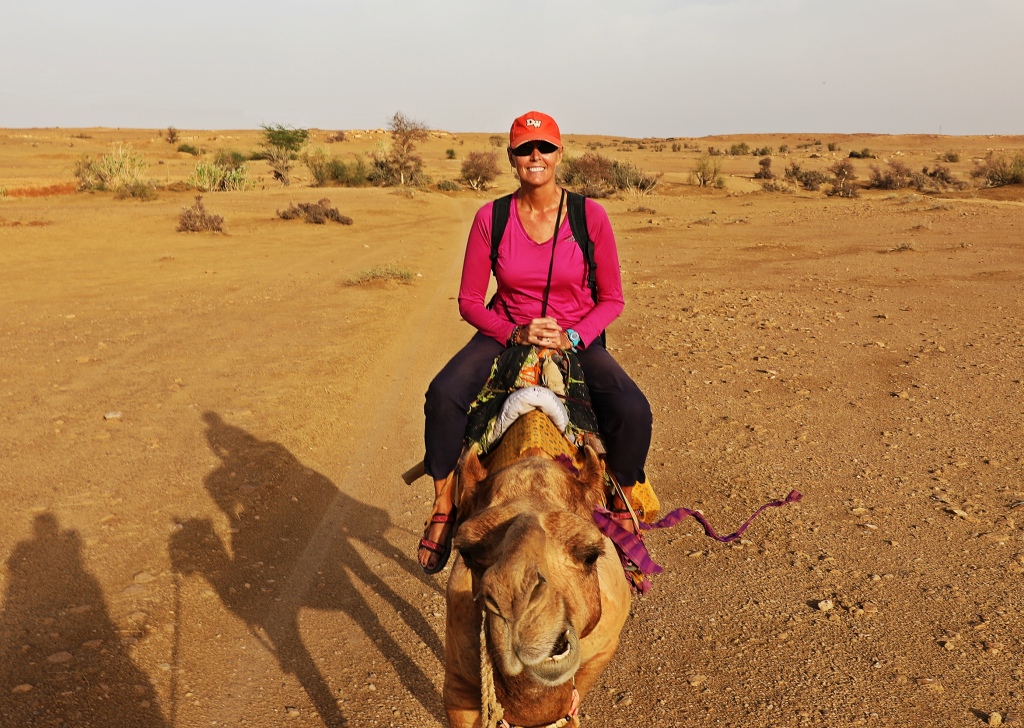
Maggie and Raj, Thar Desert 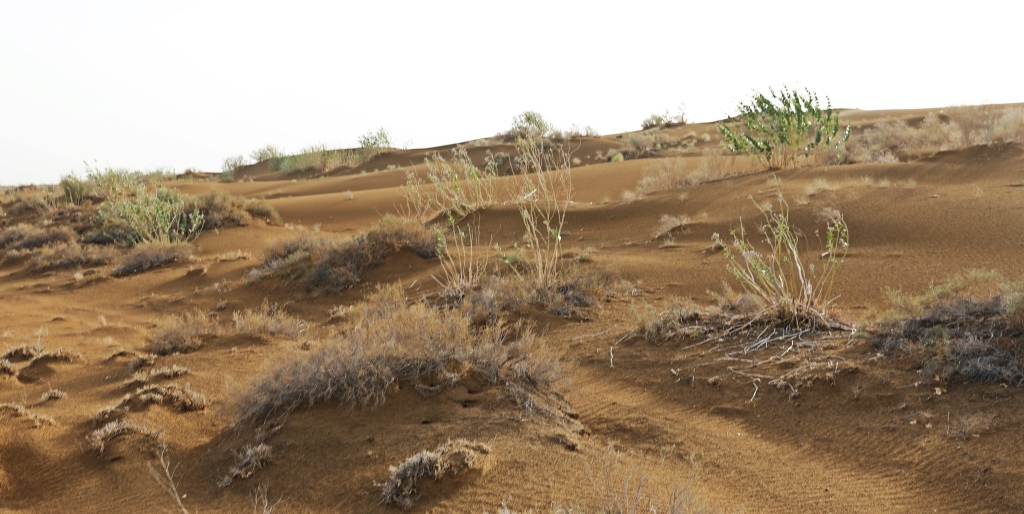
Desert Grass, Thar Desert 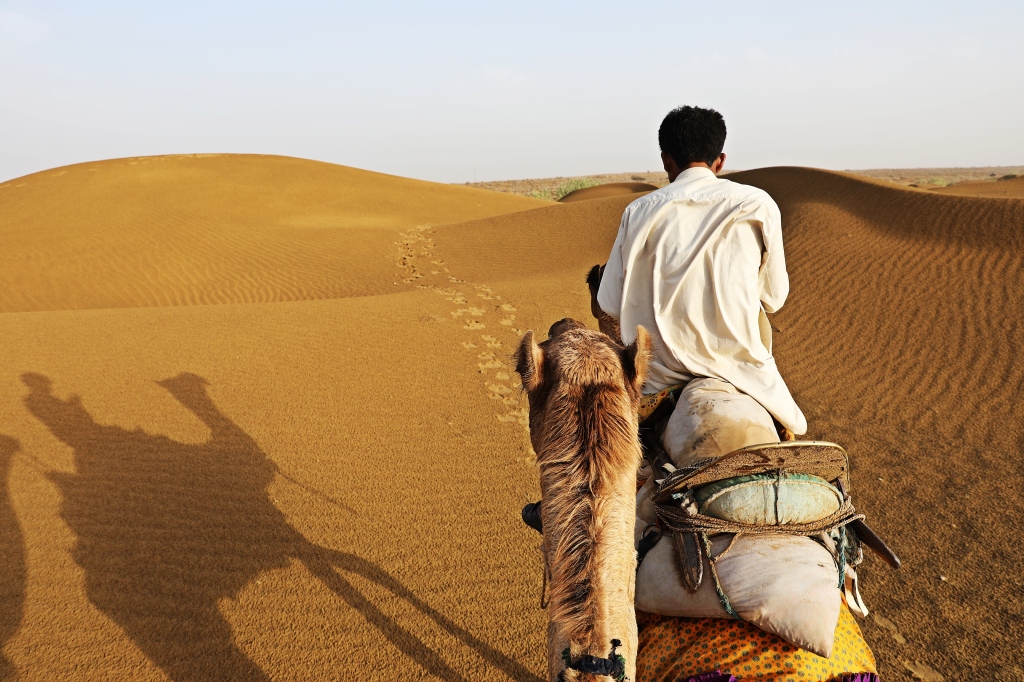
Camel Herder, Thar Desert 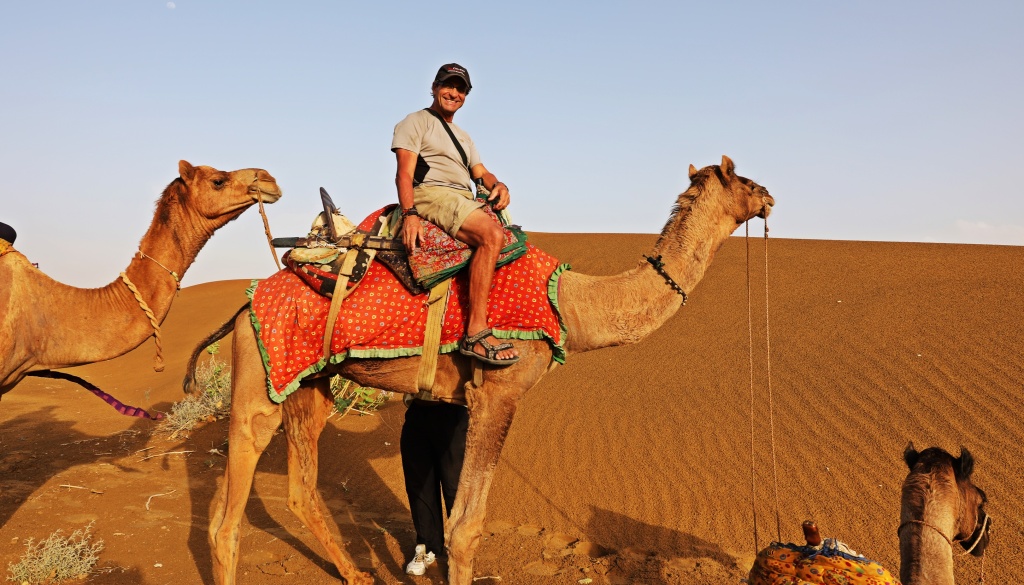
Richard and Lela, Thar Desert 
Scrub brush and sand dunes, Thar Desert 
Maggie and Raj, Thar Desert 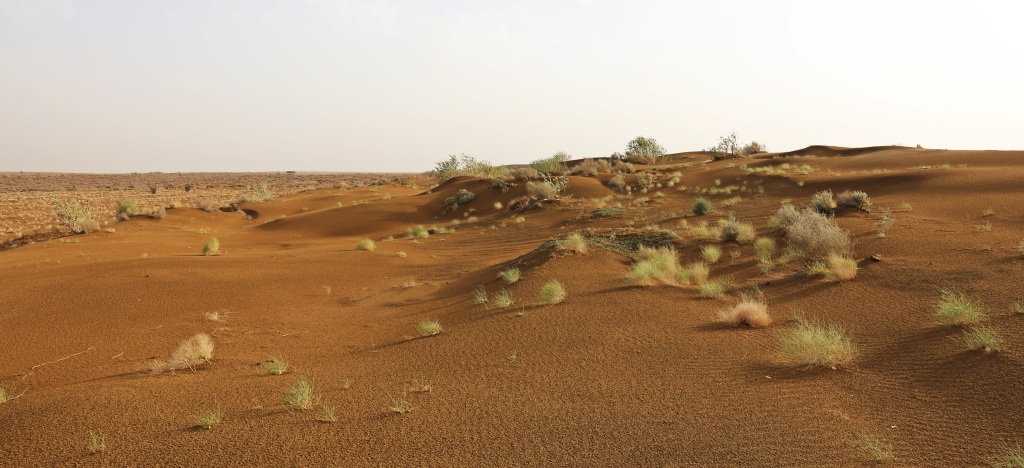
Thar Desert 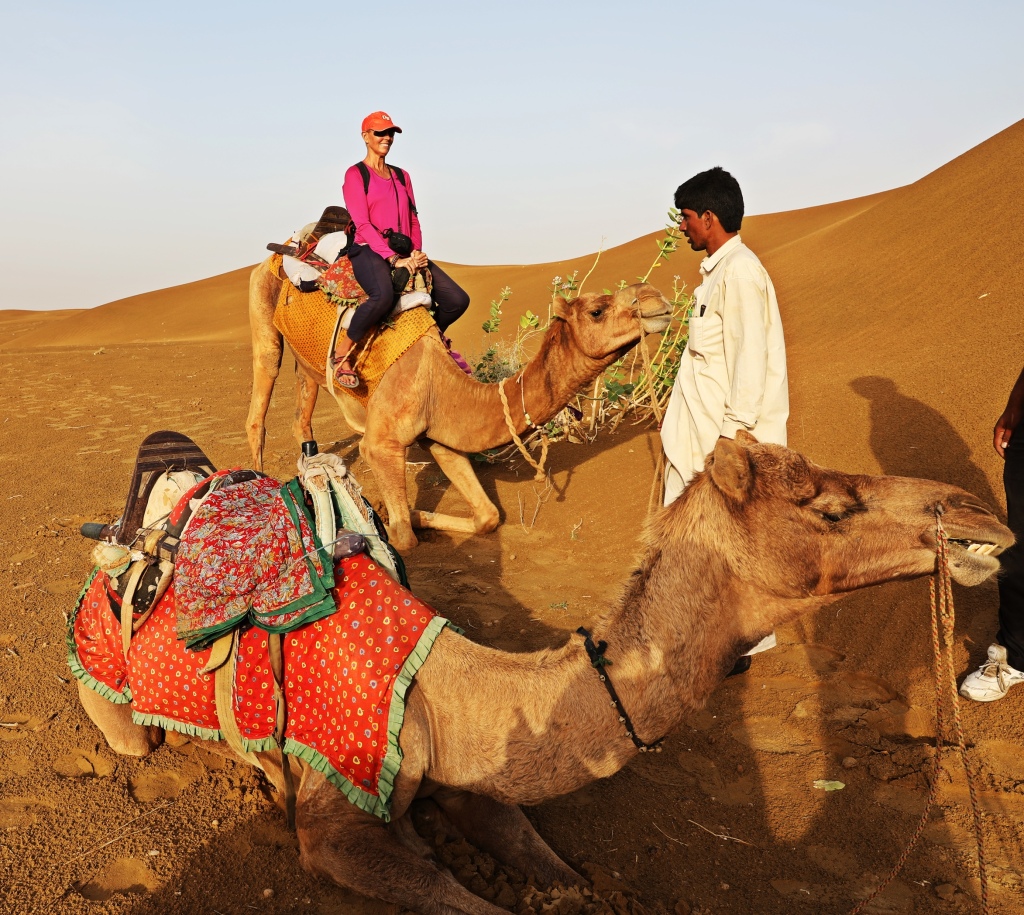
Maggie on Raj as it sits down, Thar Desert 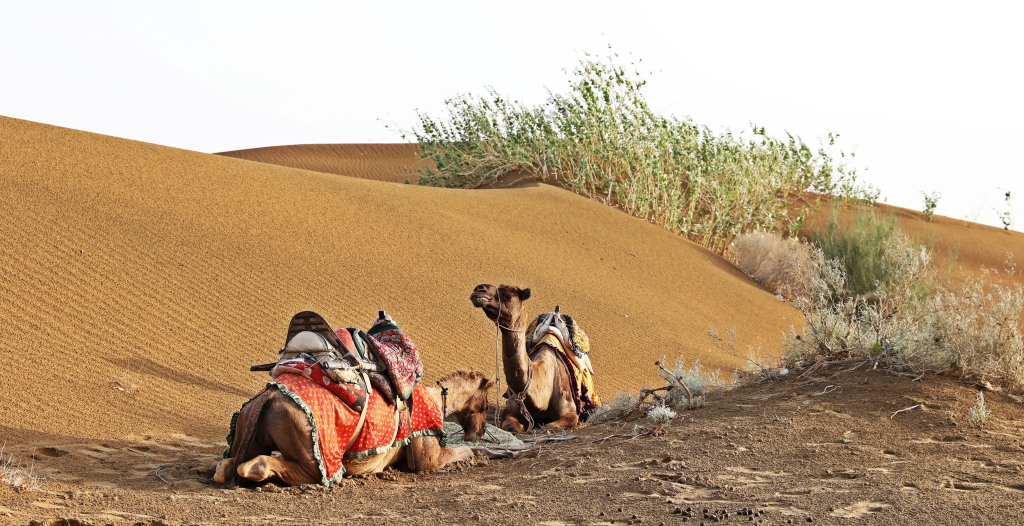
Raj and Lela having dinner, Thar Desert 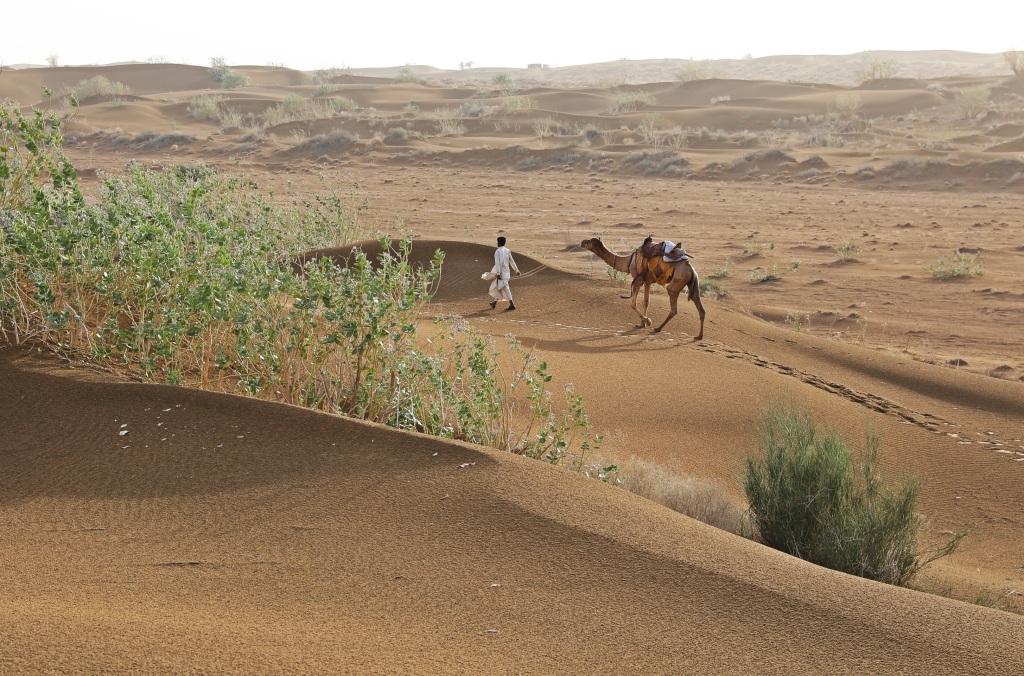
Camel herder, Thar Desert 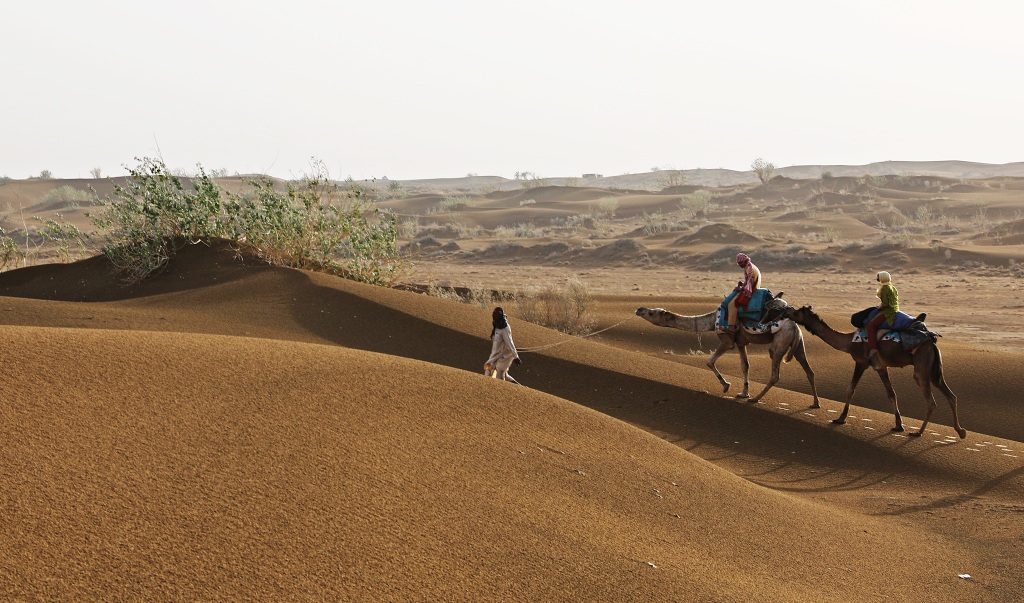
Camel train, Thar Desert 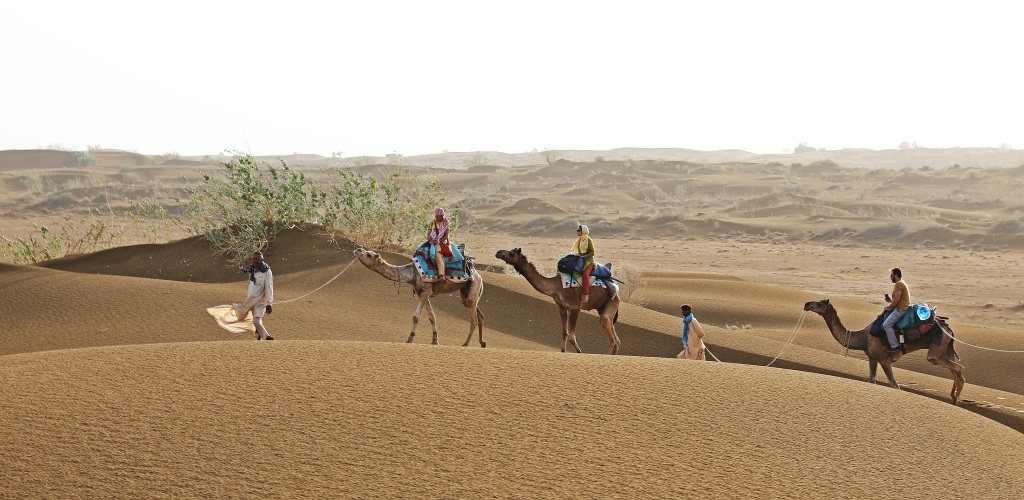
Camel train, Thar Desert 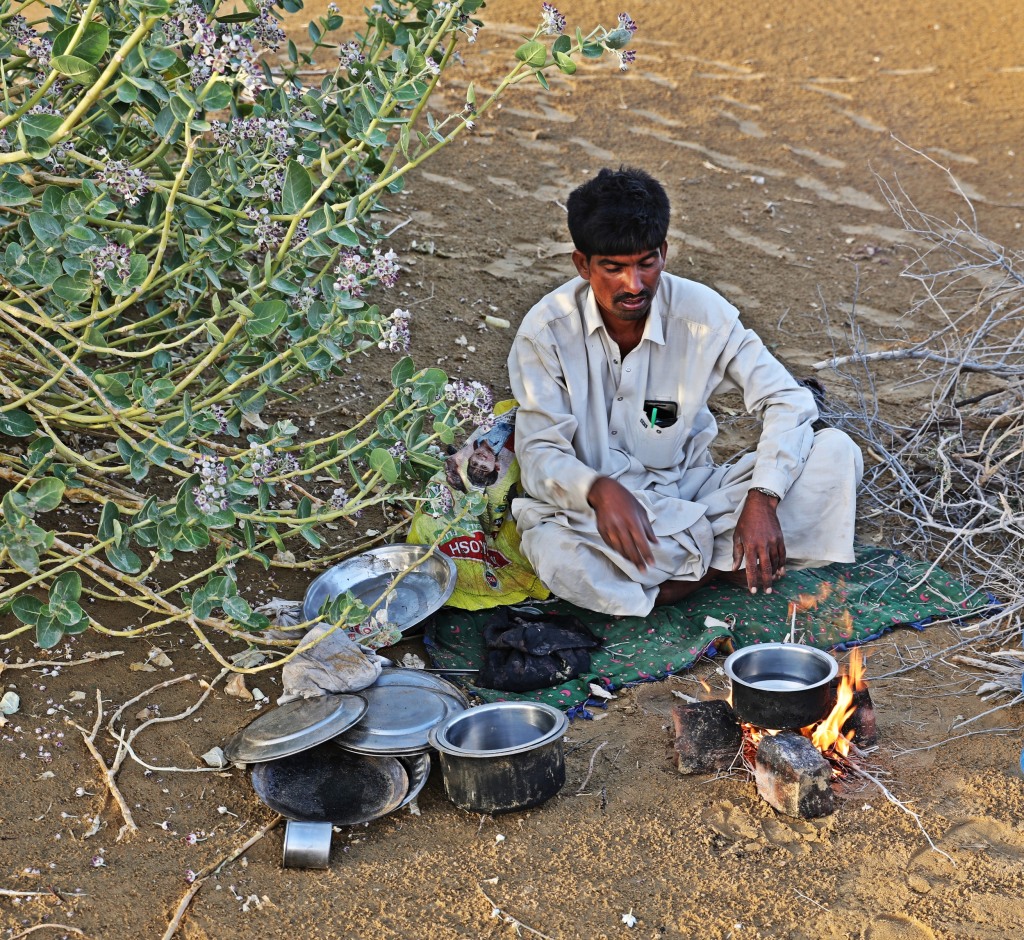
Making our dinner, Thar Desert 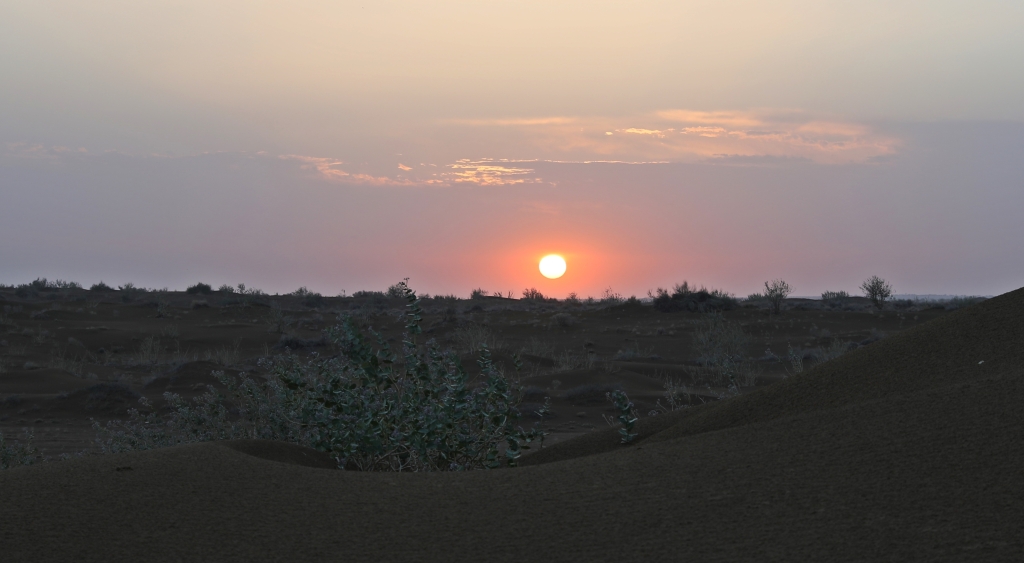
Sunset, Thar Desert
On our way to the camels, we stopped by another Jain Temple. Amer Sagar temple is 200 years old and is also built of sandstone which is covered in incredibly detailed carvings. After visiting the temple, we stopped at the ghost town ruins of Kuldhara. The citizens were apparently once very wealthy, trading gems and gold. The legends say that the town was deserted overnight because of either persecution by the state minister or because of an earthquake depending on who tells the story. There are apparently 84 of these abandoned towns in the area.
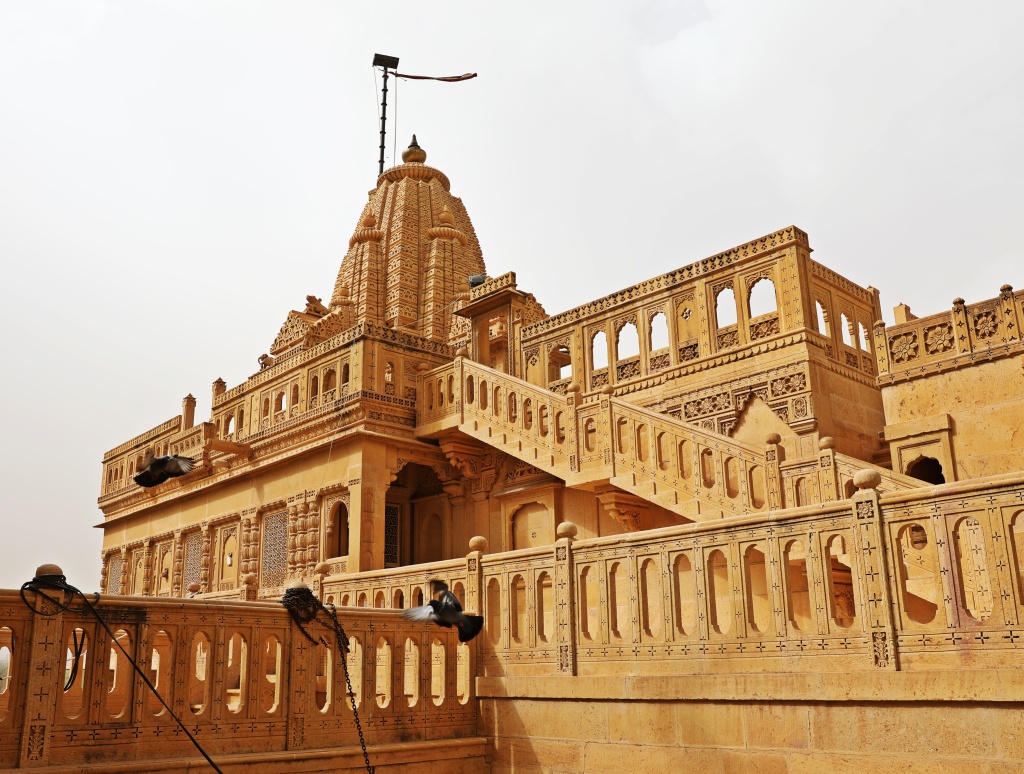
Amer Sagar Temple 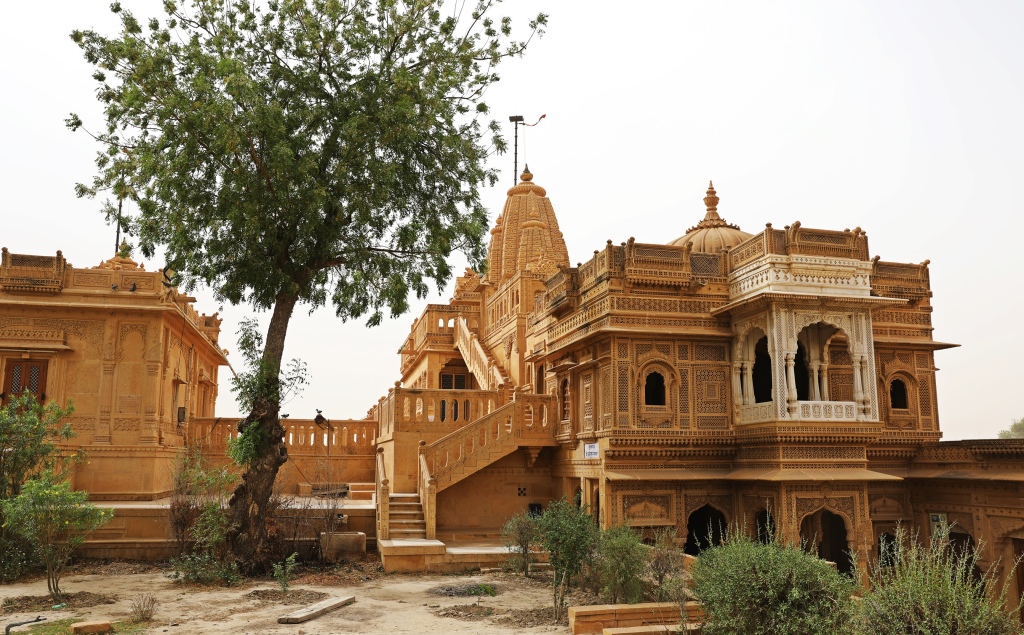
Amer Sagar Temple 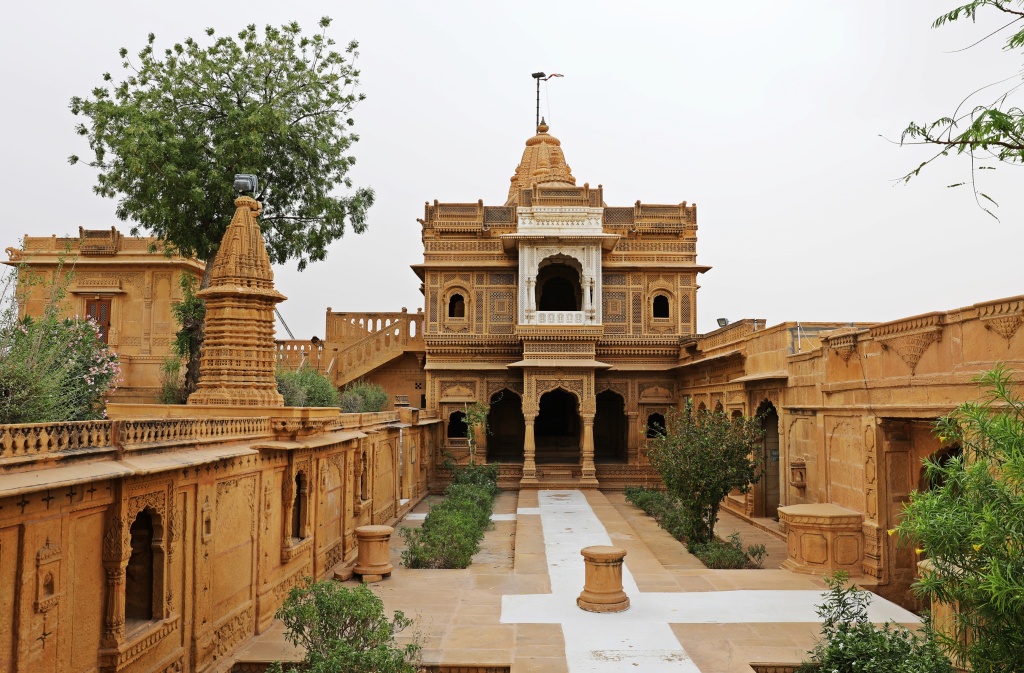
Amer Sagar Temple 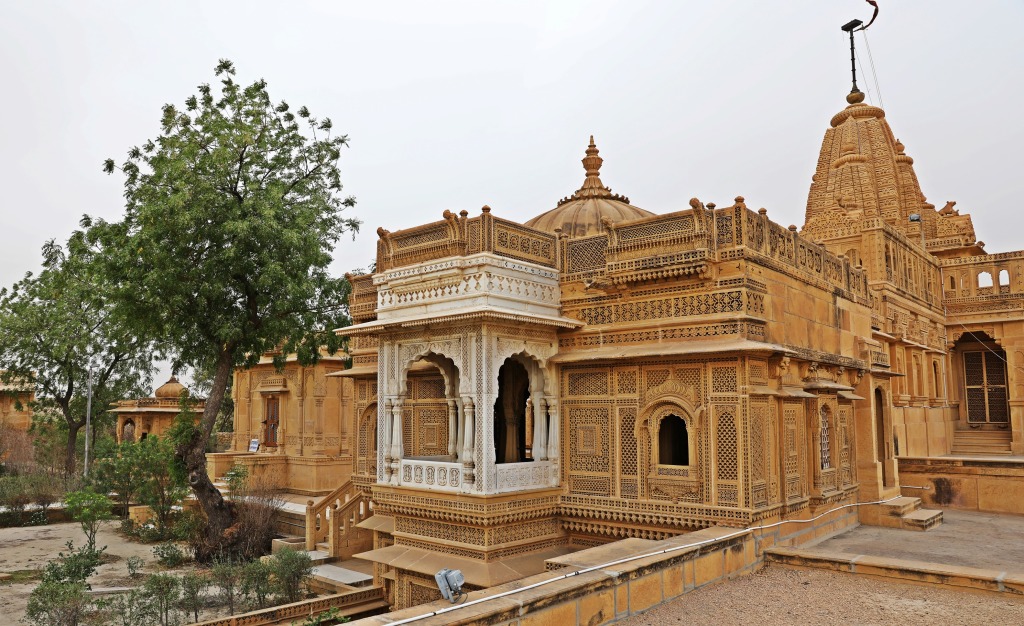
Amer Sagar Temple 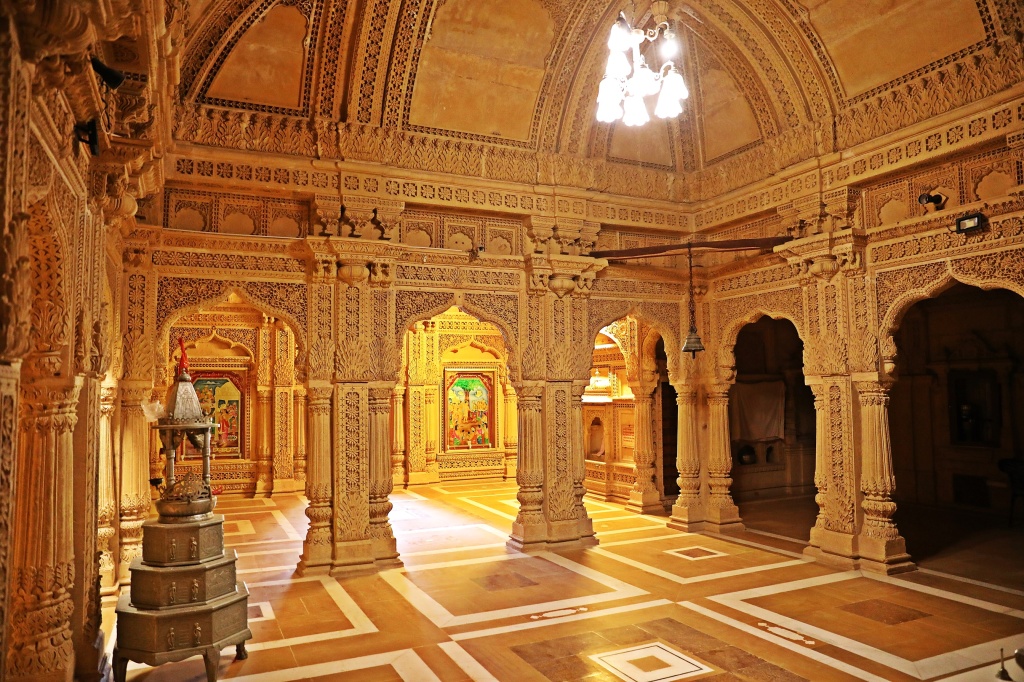
Interior, Amer Sagar Temple 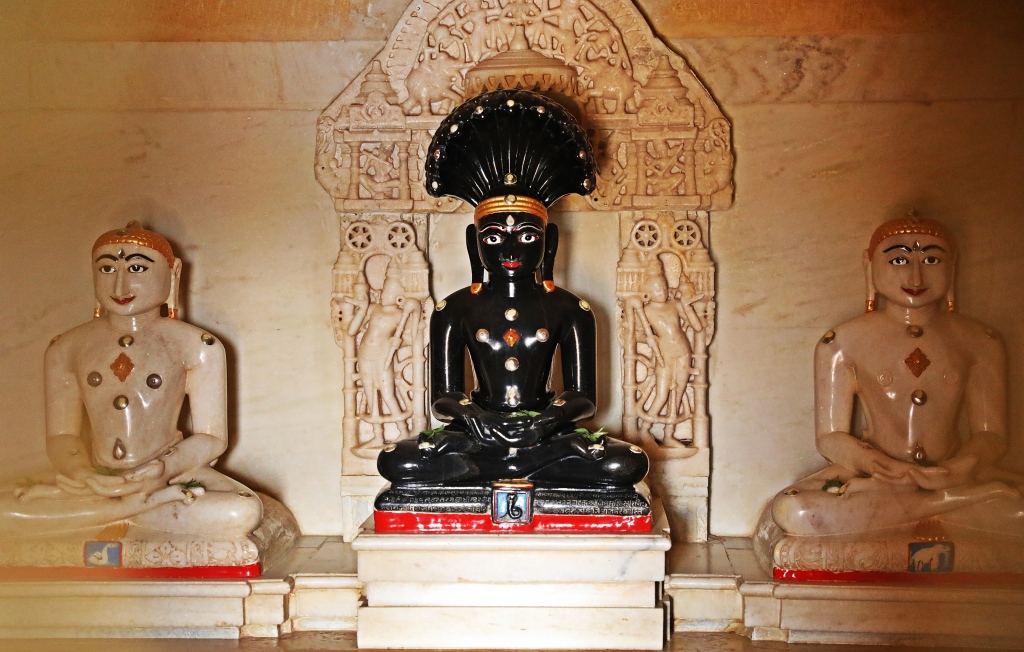
Jain teachers, Amer Sagar Temple 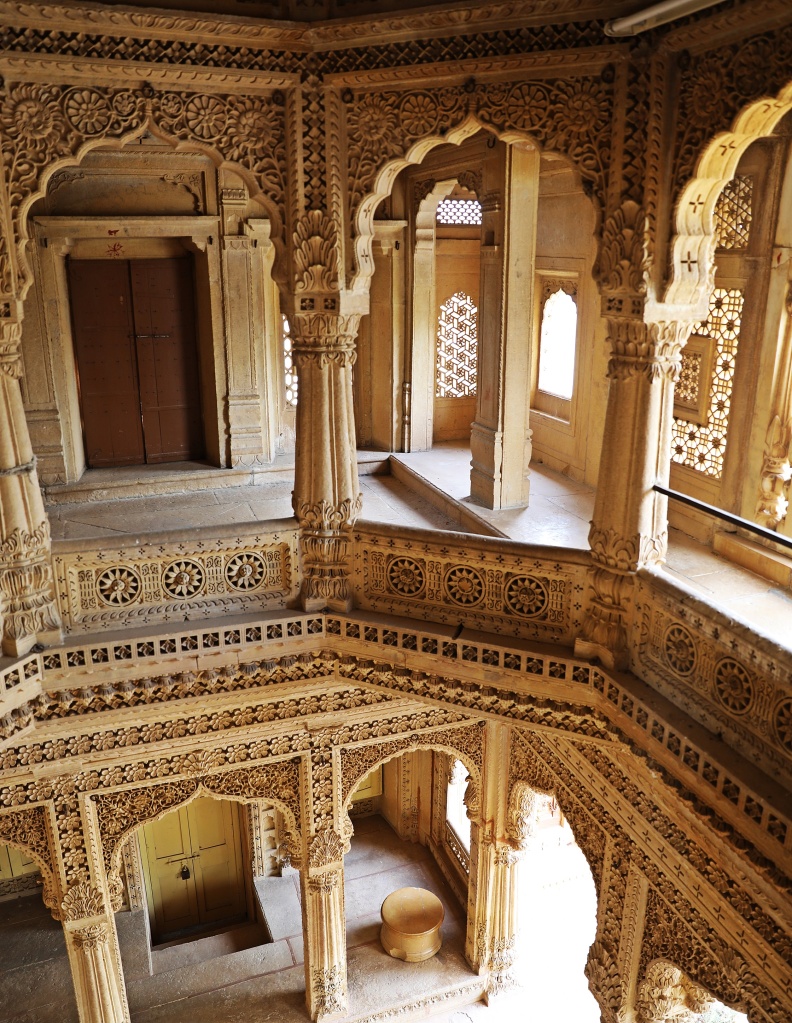
Amer Sagar Temple 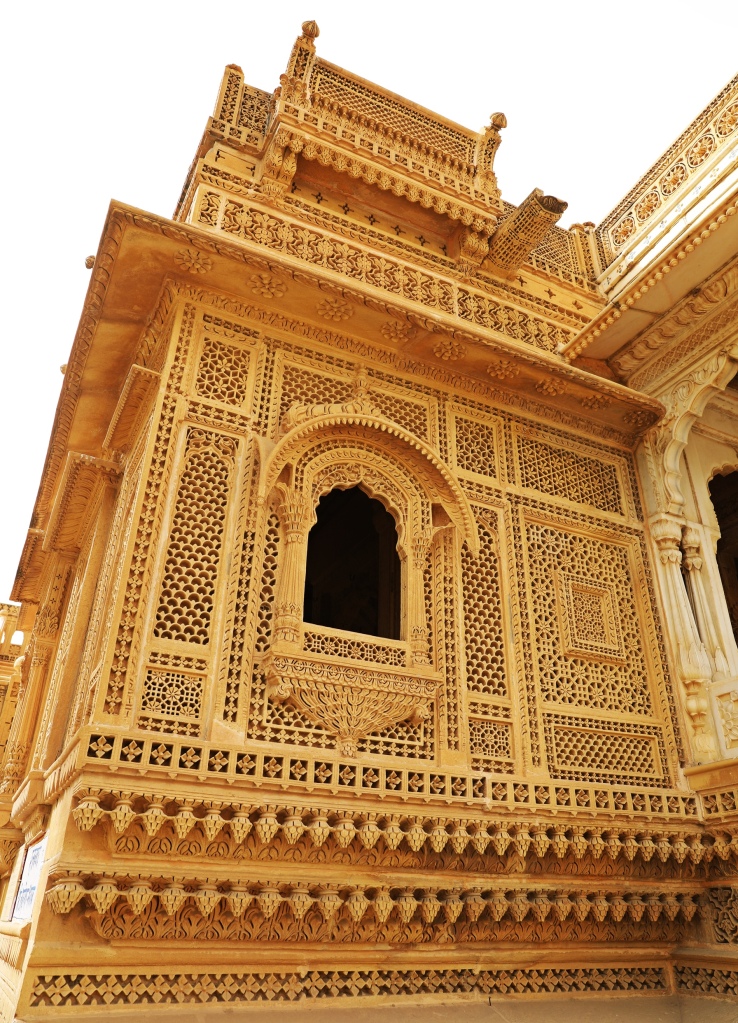
Finely carved window screen, Amer Sagar Temple 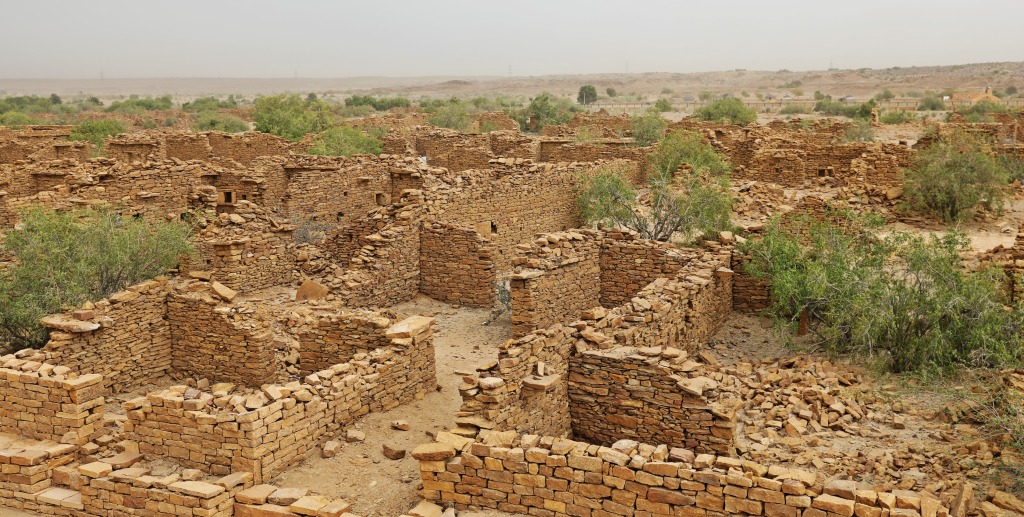
Ruins of Kuldhara
Coming up next: Jodhpur – The Blue City
For extra pics from this trip go to Gallery/Western India. For extra pictures from other blogs go to Gallery at monkeystale.ca
To read about more of our adventures go to Destinations.
If you like what you read, please comment or share it using the links below.
Great pictures! Thanks for putting in the time and energy! It’s wonderful😊
LikeLiked by 1 person
Thank you very much, we really appreciate your support!!
LikeLike
Wow, the pictures are beautiful! I have been to Jaipur but didnt get a chance to head on to Jaisalmer. Love the architecture. 😍
LikeLiked by 1 person
Thank you so much. Jaisalmer is an amazing city. The details in the architecture incredible. On your next trip perhaps…
LikeLiked by 1 person
Fingers crossed! 🙂
LikeLiked by 1 person
Your photos are just gorgeous. I am taken by the monochromatic scenes with the splashes of colour from the bright saris and fabrics on display. Those havelis are incredibly beautiful, and those carvings…wow! You got me on the difference between the two sides…the decorative detail at the top of the jutting-out rounded balconies??? Love your camel rise photos too.
LikeLiked by 1 person
Thanks Caroline, Jaisalmer was one of our favourite places in Rajasthan, the carvings were almost unbelievable. Some of the differences are that rounded top, but also the small windows beside the centre window are different sizes as are the windows further away. Some of the balconies stood out further too, but that’s difficult to tell from the picture.
LikeLiked by 1 person
Amazing pictures!!
LikeLiked by 1 person
Thank you so much!!
LikeLike